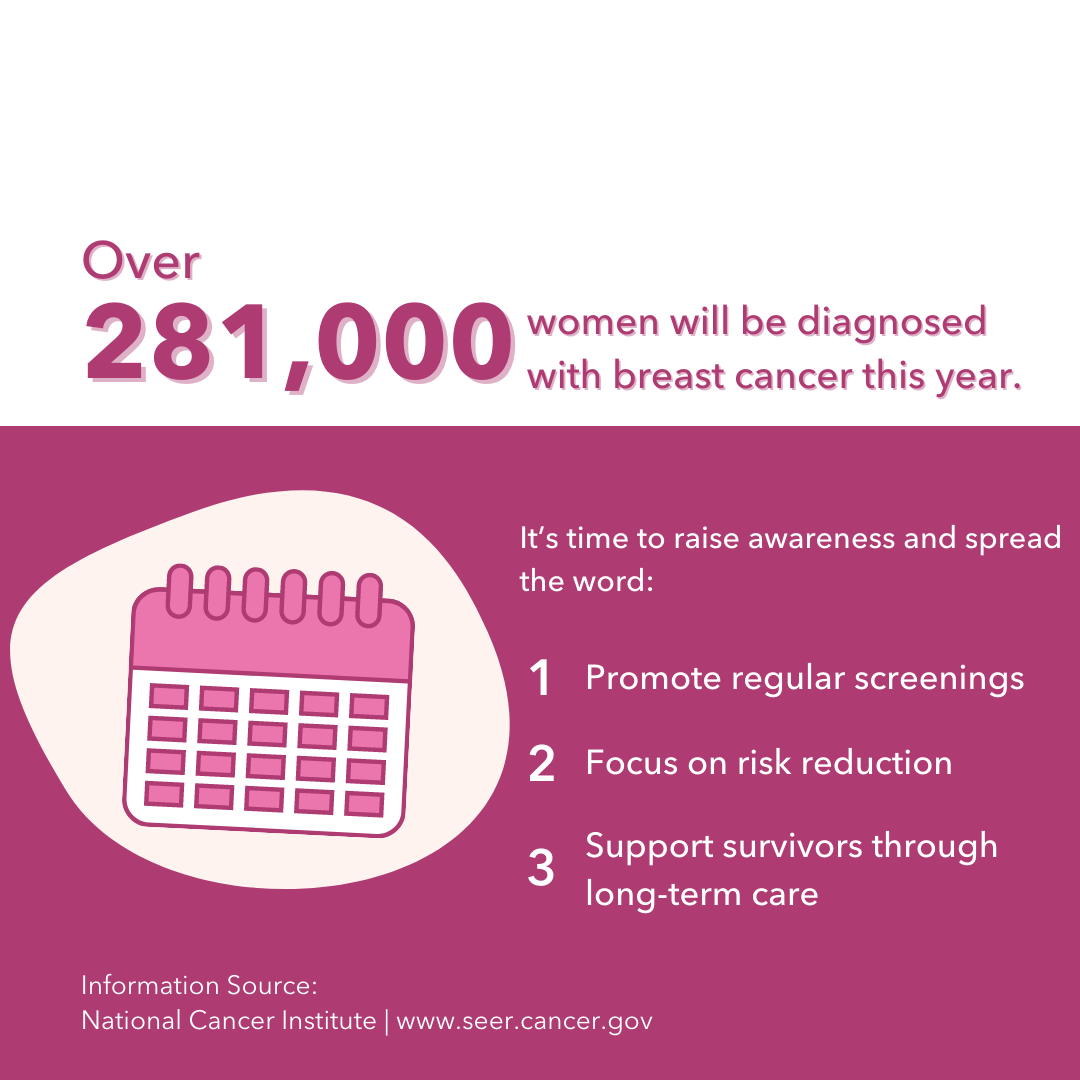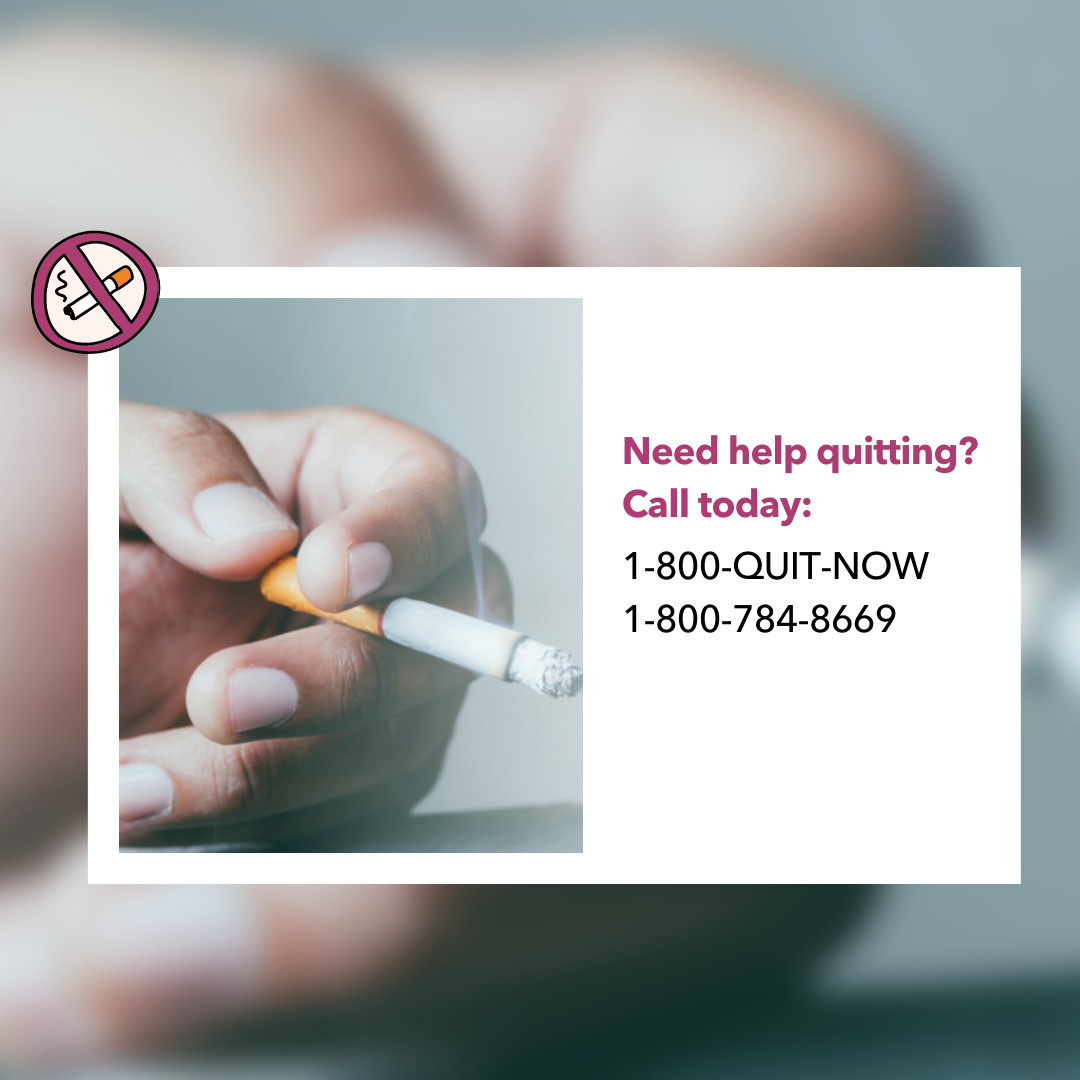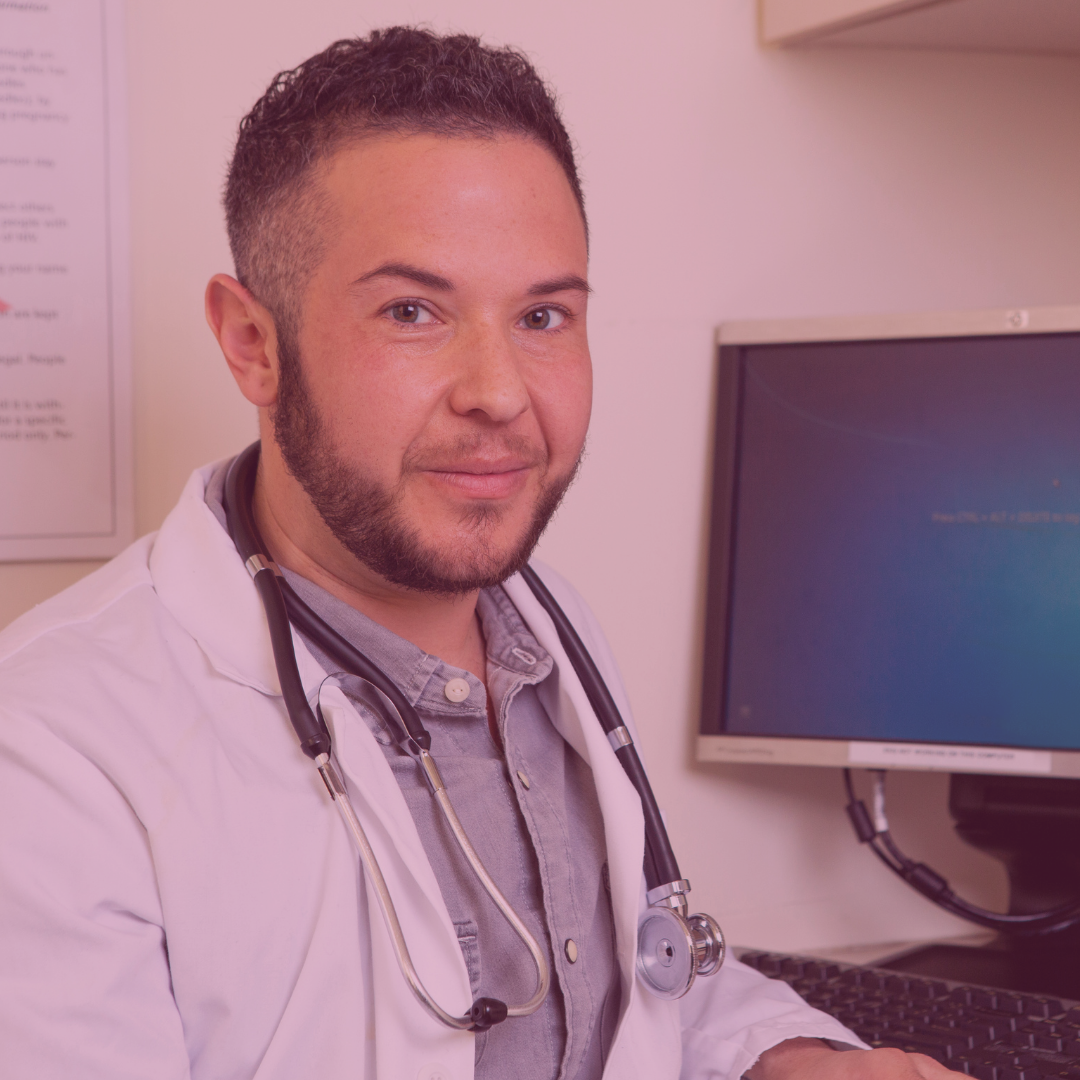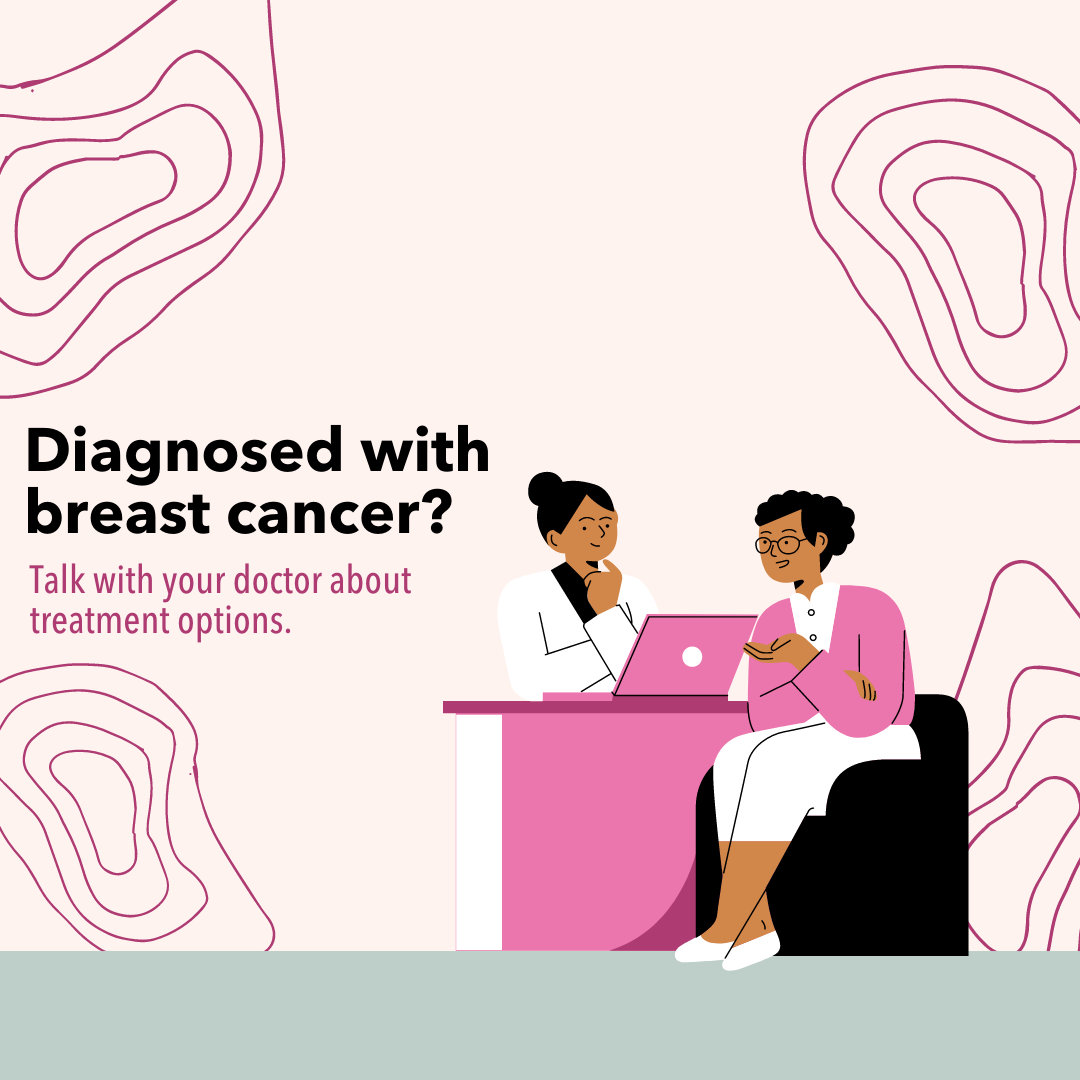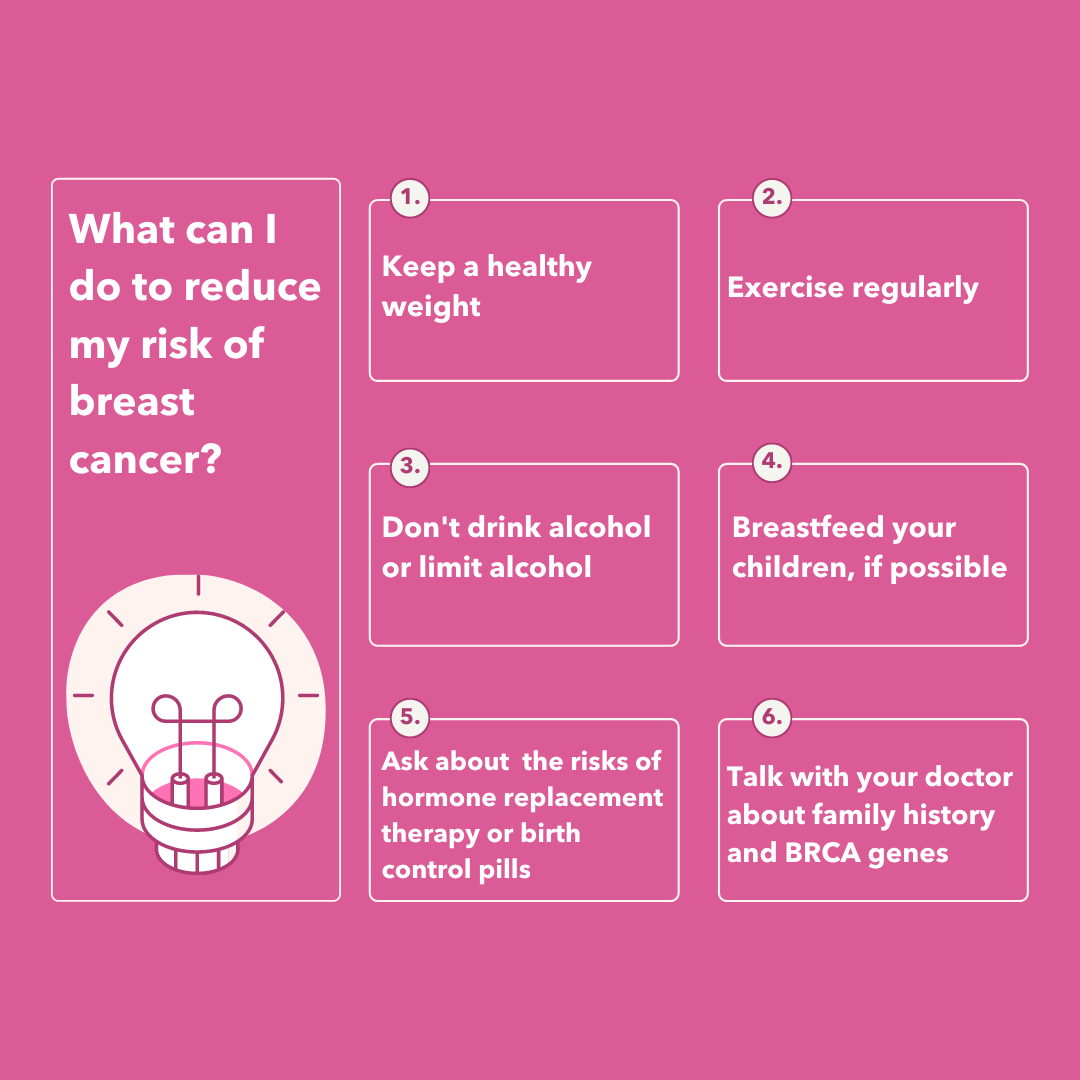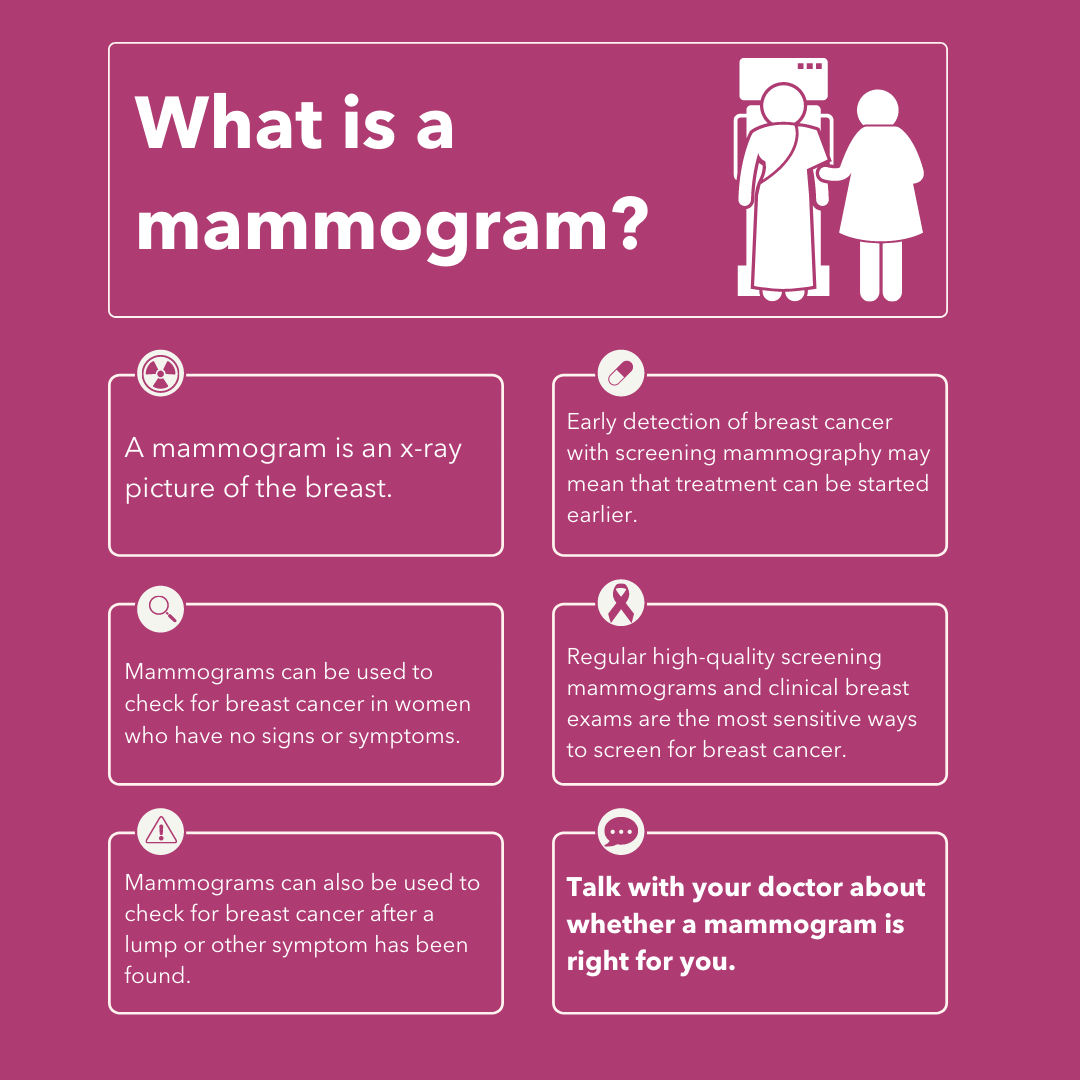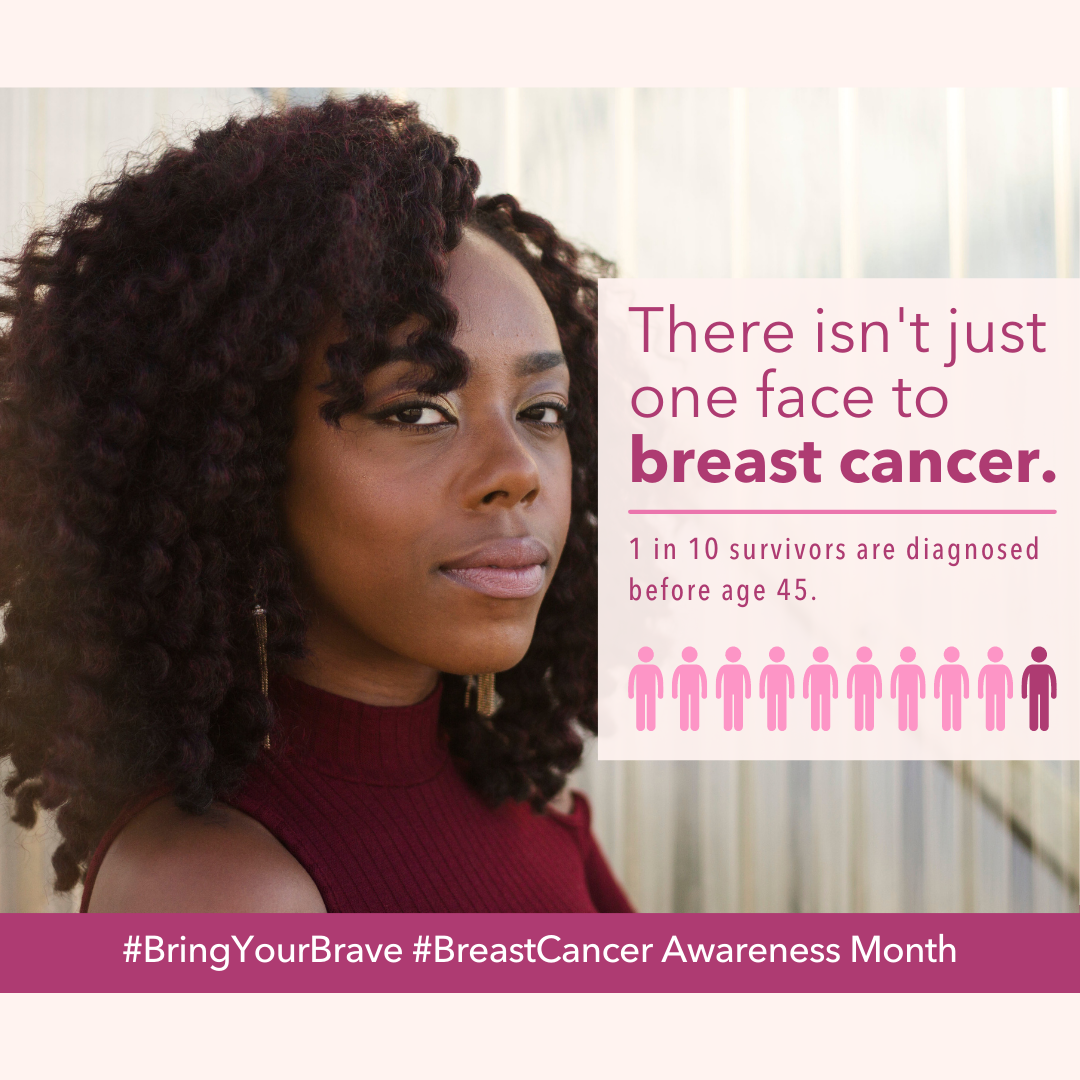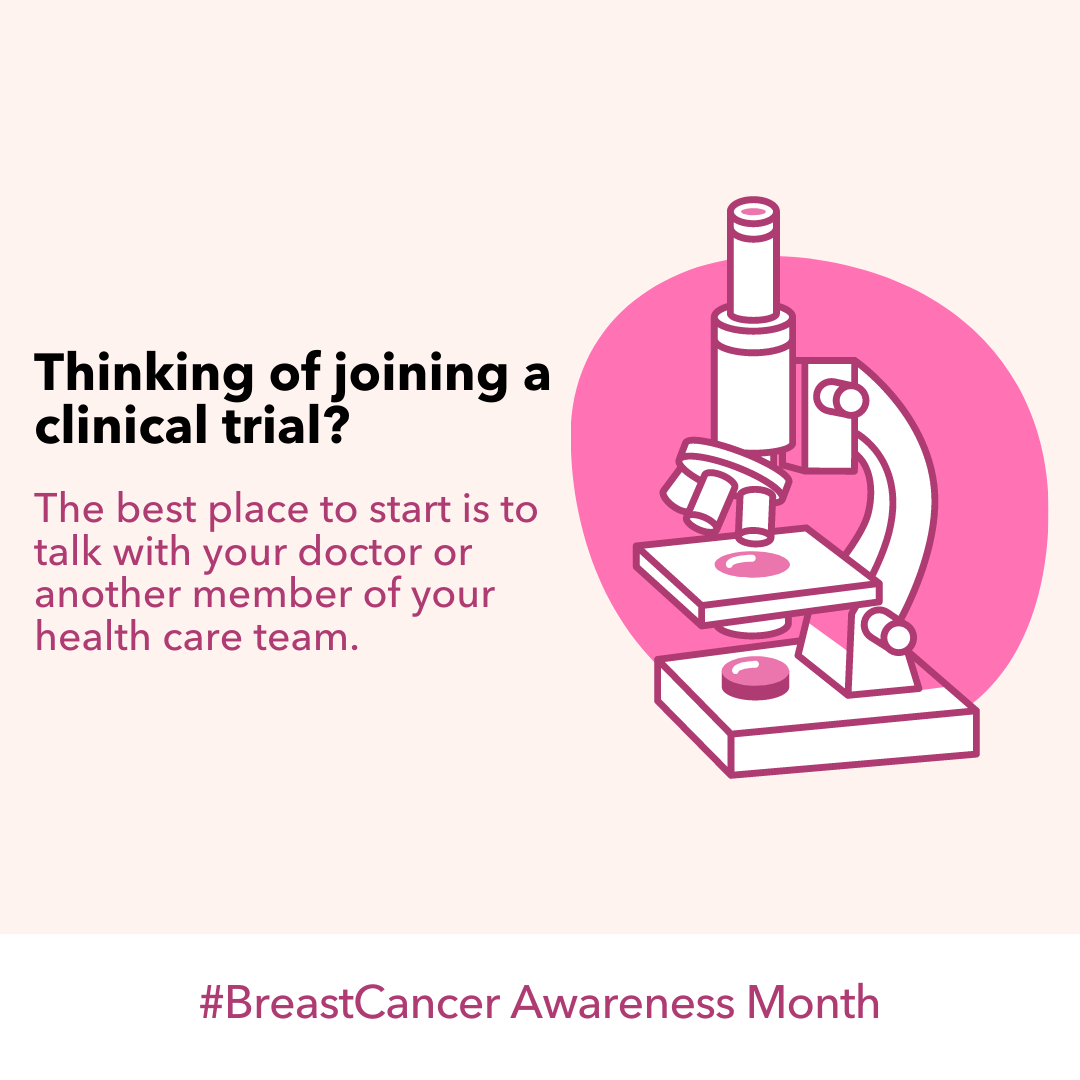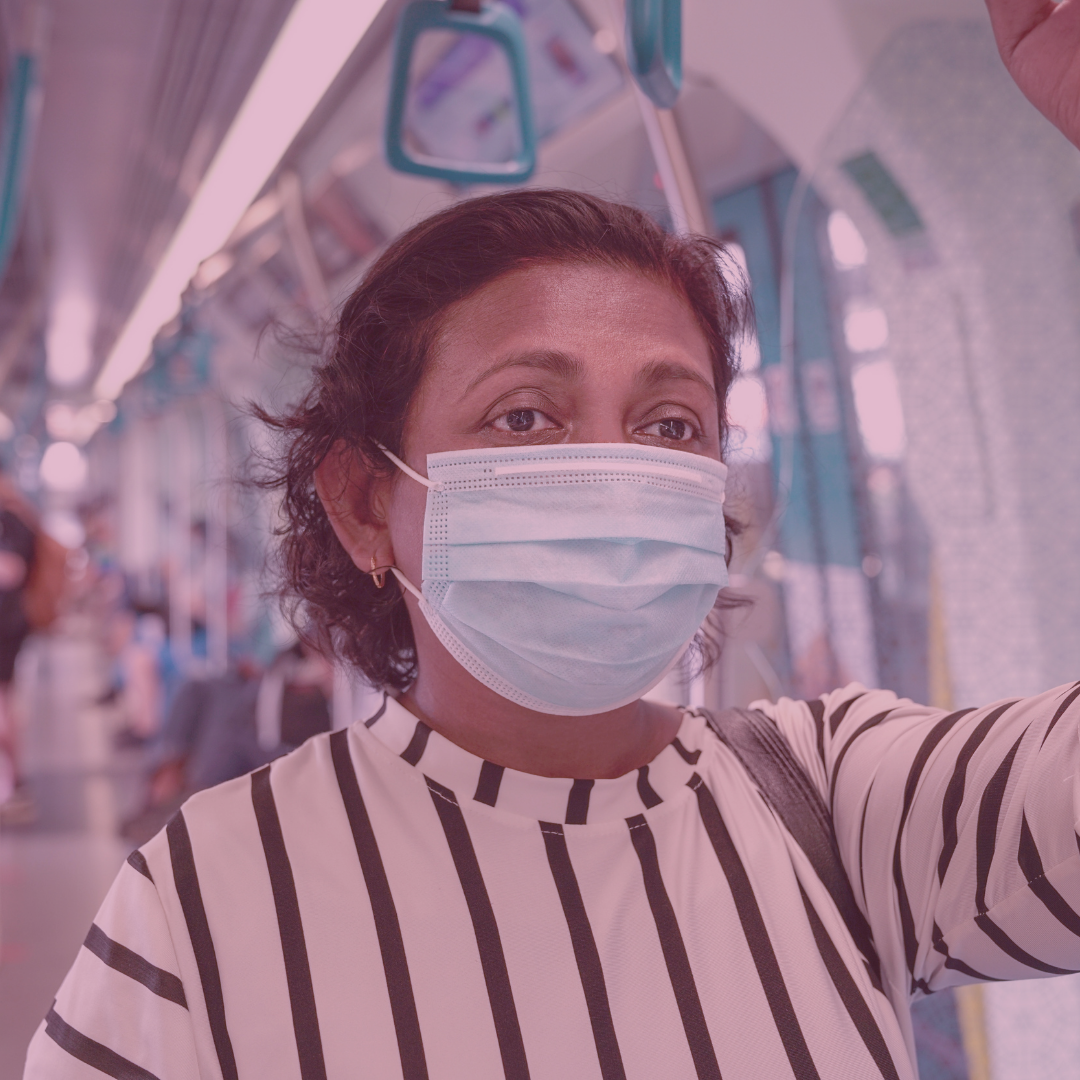About Breast Cancer Awareness Month
Breast Cancer Awareness Month is an annual observance held in the month of October. It is intended to raise awareness about breast cancer, the second most common cancer among women in the United States (Centers for Disease Control and Prevention, 2021). This breast cancer awareness month campaign can help your organization implement evidence-based practices when communicating about breast cancer.
Data and Statistics
In 2018, the latest year for which incidence data are available, in the United States, 254,744 new cases of breast cancer were reported among women, and 42,465 women died of this cancer. For every 100,000 women, 127 new breast cancer cases were reported and 20 women died of this cancer (U.S. Cancer Statistics Working Group, 2021).
Best Practices for Communicating About Breast Cancer
Promote patient-provider discussions of family history and risk
- Present personalized information about breast cancer risk, especially for men or young women at high risk due to family history (Yi, Xiao, and Thomas et al., 2015; CDC, 2019).
- Directly encourage patients to ask questions to facilitate shared decision-making (Joseph-Williams, Elwyn, and Edwards, 2014).
- Encourage providers to emphasize screening, risk reduction, and family history, especially for those at higher risk.
Share information about long-term care and survivorship
- Promote specific resources that patients can request, like survivorship care plans, long-term care recommendations, or information tailored to young breast cancer survivors (CDC, 2019).
- Focus on concrete actions and behaviors, such as those that can minimize side effects and help patients make treatment decisions (Vraga et al., 2018).
- Address sexual and reproductive health needs by sharing resources to manage long-term side effects (Black et al., 2020).
- For providers, promote resources like the American Cancer Society/American Society of Clinical Oncology Breast Cancer Survivorship Care Guideline and the Cancer Survivorship E-Learning Series for Primary Care Providers.
Remind providers about the importance of communication and its impact on patients’ quality of life
- Emphasize that patients often report health professionals as their most important information source (Shea-Budgell et al., 2014).
- Prompt providers to spend more time talking to their patients and ask proactive questions, like, “Have you had any problems that we haven’t discussed yet?” and “Are there any things that we can do better?” (Peppercorn, 2012).
- Remind providers to avoid heteronormative assumptions about their patients and explore a full range of surgical and post-surgical options. For example, forgoing breast reconstruction can be an affirming decision for some LGBTQ+ survivors (Brown and McElroy, 2016; Rubin and Tanenbaum, 2011).
Communicating with Diverse Audiences
When communicating about breast cancer, your audience may be diverse. Consider the information most useful to the relevant groups. Certain groups experience disparities in breast cancer screening, incidence, mortality, and survival (National Cancer Institute, 2020). Cancer health disparities are complex and affected by various factors, such as, social determinants of health, behavior, biology, genetics, and more (National Cancer Institute, 2020). Communication-related issues may also play a role in cancer disparities (White-Means and Osmani, 2017).
African American women are almost twice as likely to be diagnosed with triple-negative breast cancer and are more likely to die of breast cancer than white women. (CDC, 2021; National Cancer Institute, 2020). Compared to women of other races, African American women may mistrust the medical system and are less likely to report having information discussed in detail to understand (Sutton, He, Edmonds, and Sheppard, 2019; White-Means and Osmani, 2017).
For Hispanic women, breast cancer is the leading cause of cancer death as this group may experience screening delays and later stage diagnoses, compared to white women. (CDC, 2021; Yedjou, Sims and Miele, et al., 2019). Hispanic/Latinx communities have the highest uninsured rates of any racial or ethnic group in the United States (Office of Minority Health, N.D.) Patients who are uninsured or have public health insurance report lower quality patient-provider communication than privately insured patients (White-Means and Osmani, 2017).
In the United States, 9% of all new breast cancer cases are among individuals younger than 45 years, which may increase risk of recurrence and mortality (CDC, 2019). Breast cancer in young women is more likely to be hereditary, more likely to be found at a later stage, and often more aggressive and difficult to treat (CDC, 2019).
Breast Cancer Resources |
|
|---|---|
| American Cancer Society/American Society of Clinical Oncology Breast Cancer Survivorship Care Guideline | This guideline provides recommendations to assist primary care and other clinicians in the care of female adult survivors of breast cancer. Recommendations on surveillance for breast cancer recurrence, screening for second primary cancers, assessment and management of physical and psychosocial long‐term and late effects of breast cancer and its treatment, health promotion, and care coordination/practice implications are made |
| Breast Cancer Awareness Month Infographic in English and Spanish | These bilingual infographics, developed by the Nuestras Voces Network in English and Spanish, raise awareness about breast cancer among younger women and promote CDC’s Bring Your Brave campaign and CDC’s Spanish information on breast cancer. |
| LGBTQ+ With Breast Cancer | This resource provides tailored information and practical tools to help patients understand disparities in care and research for LGBTQ+ people, challenges faced during treatment and real stories of LGBTQ+ people living with breast cancer. |
| Breast Cancer: What Are the Risk Factors? | Studies have shown that your risk for breast cancer is due to a combination of factors. This CDC web page details risk factors you cannot change, risk factors you can change and who is at high risk. |
| Cancer Survivorship E-Learning Series for Primary Care Providers | This series educates primary care providers about how to better understand and care for cancer survivors in the primary care setting. Clinicians can learn about caring for survivors of adult-onset breast cancer in Module 9: Spotlight on Breast Cancer Survivorship: Clinical Follow-Up Care Guideline for Primary Care Providers. |
| Black Women and Breast Cancer | This resource from the African American Breast Cancer Alliance contains information and resources about breast cancer for black women. |
| Fast Facts: Breast Cancer and Financial Barriers | This fact sheet from SelfMade Health Network covers financial challenges associated with breast cancer. |
| Let’s Talk About Breast Cancer Shareable Images | These images from Selfmade Health Network focus on breast cancer screening. |
|
National Cancer Survivorship Resource Center Toolkit National Cancer Survivorship Resource Center Provider Toolkit |
Resources to help with implementing American Cancer Society cancer survivorship care guidelines for several cancers including breast cancer. Review a provider checklist for breast cancer on page 16 and a patient checklist for breast cancer on page 6. |
| Your Breast Cancer Surgery Program | This standardized program has been developed by the American College of Surgeons along with the Commission on Cancer (COC) and the National Accreditation Program for Breast Centers (NAPBC) to provide users with knowledge and training to support surgical preparation and optimal recovery. |
Breast Cancer Awareness Month Messages and Graphics
| Message | Suggested Graphic |
|
October is #BreastCancer Awareness Month! #DYK breast cancer is the second most common cancer for women in the U.S.? Read more quick facts: https://bit.ly/3hmFfup #BCSM #CompCancer |
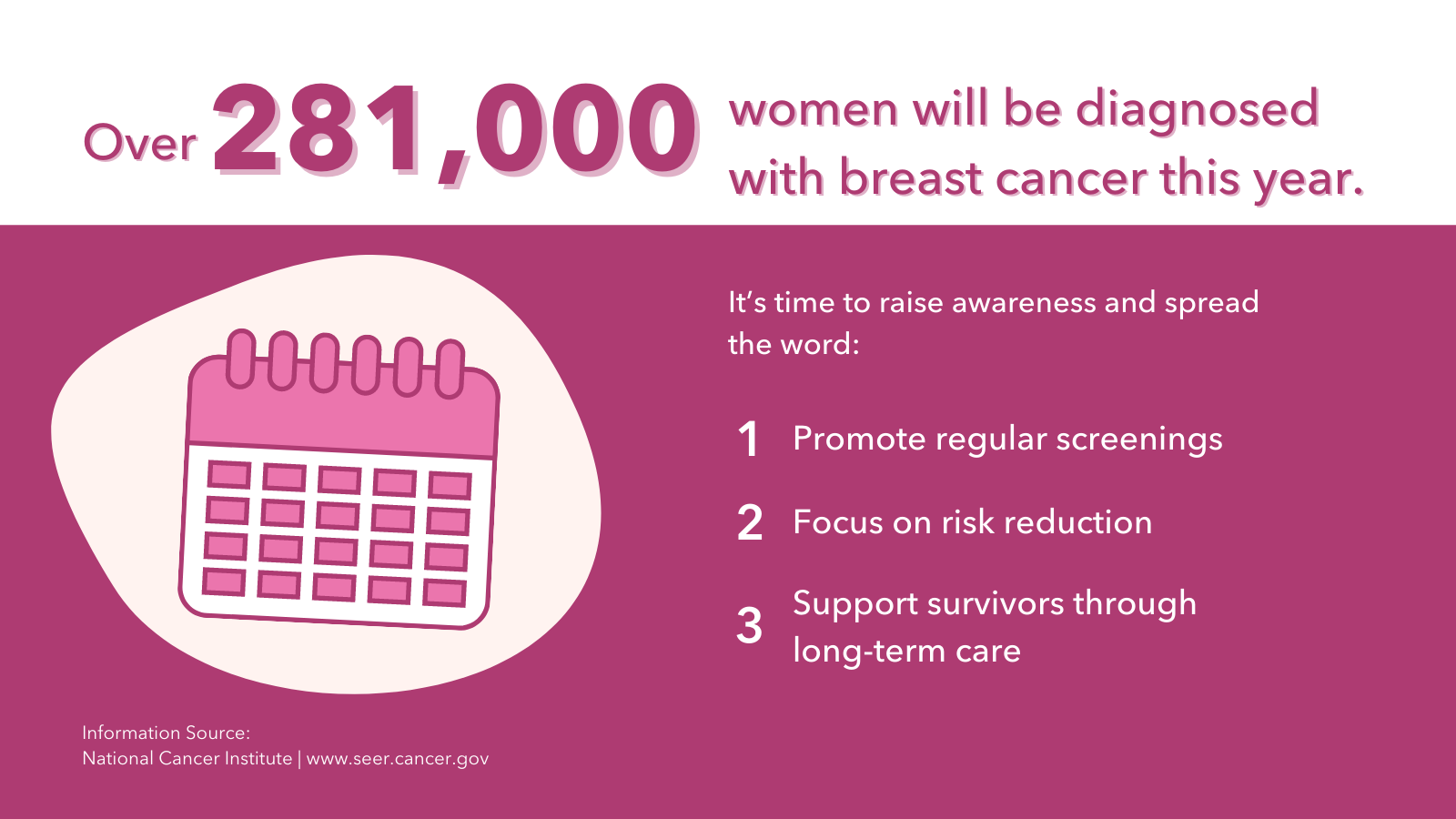
|
|
#Breastcancer clinical trials are critical to improving treatment and creating guidelines for care. See if there is a trial made for you @TheNCI’s site: http://bit.ly/329Hhq7 |
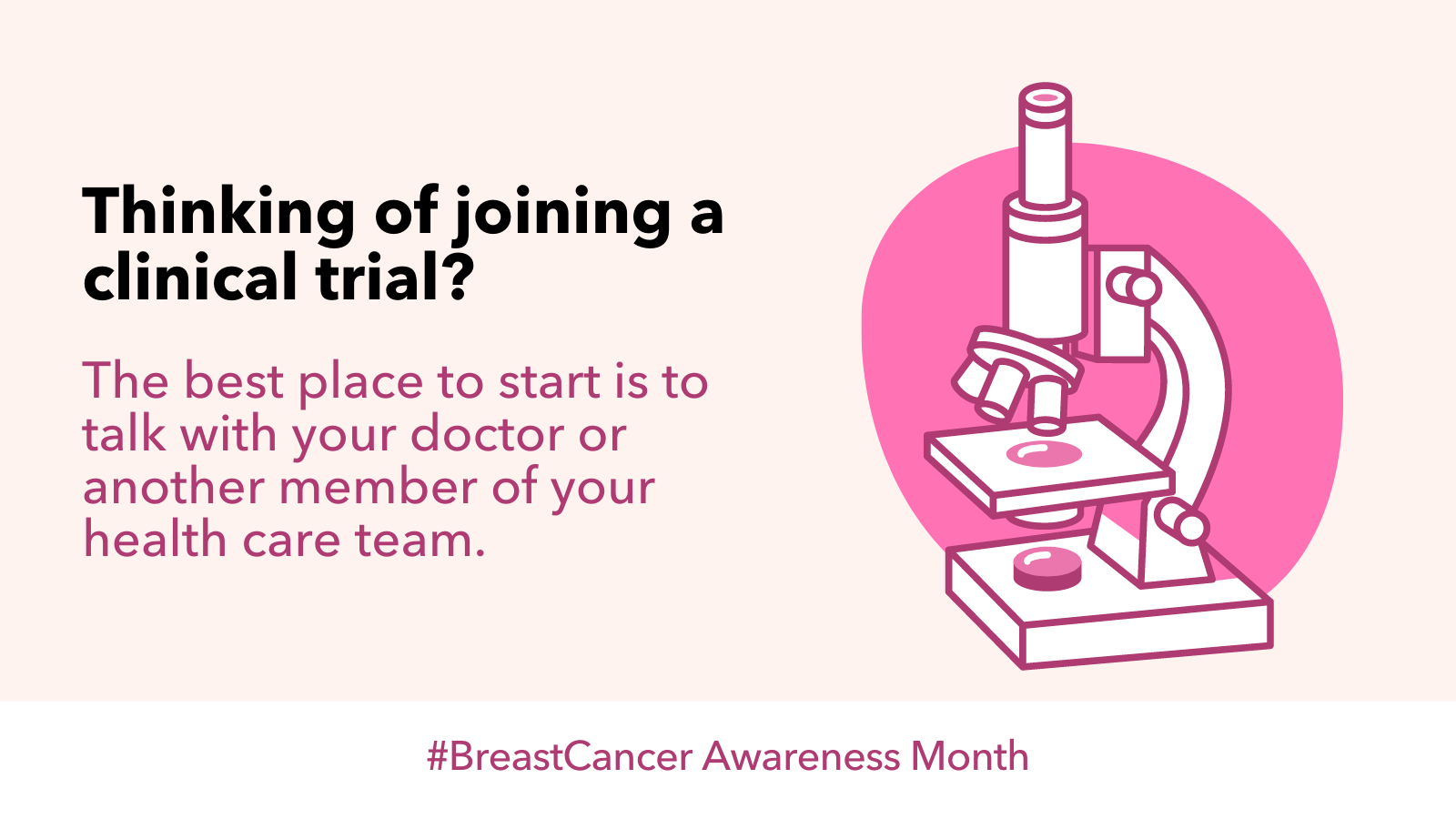
|
|
Talk to your doctor to review your family history and ways to reduce your #breastcancer risk. Get started by reading more from @CDC_Cancer: http://bit.ly/2Kz4b5q #BCSM |
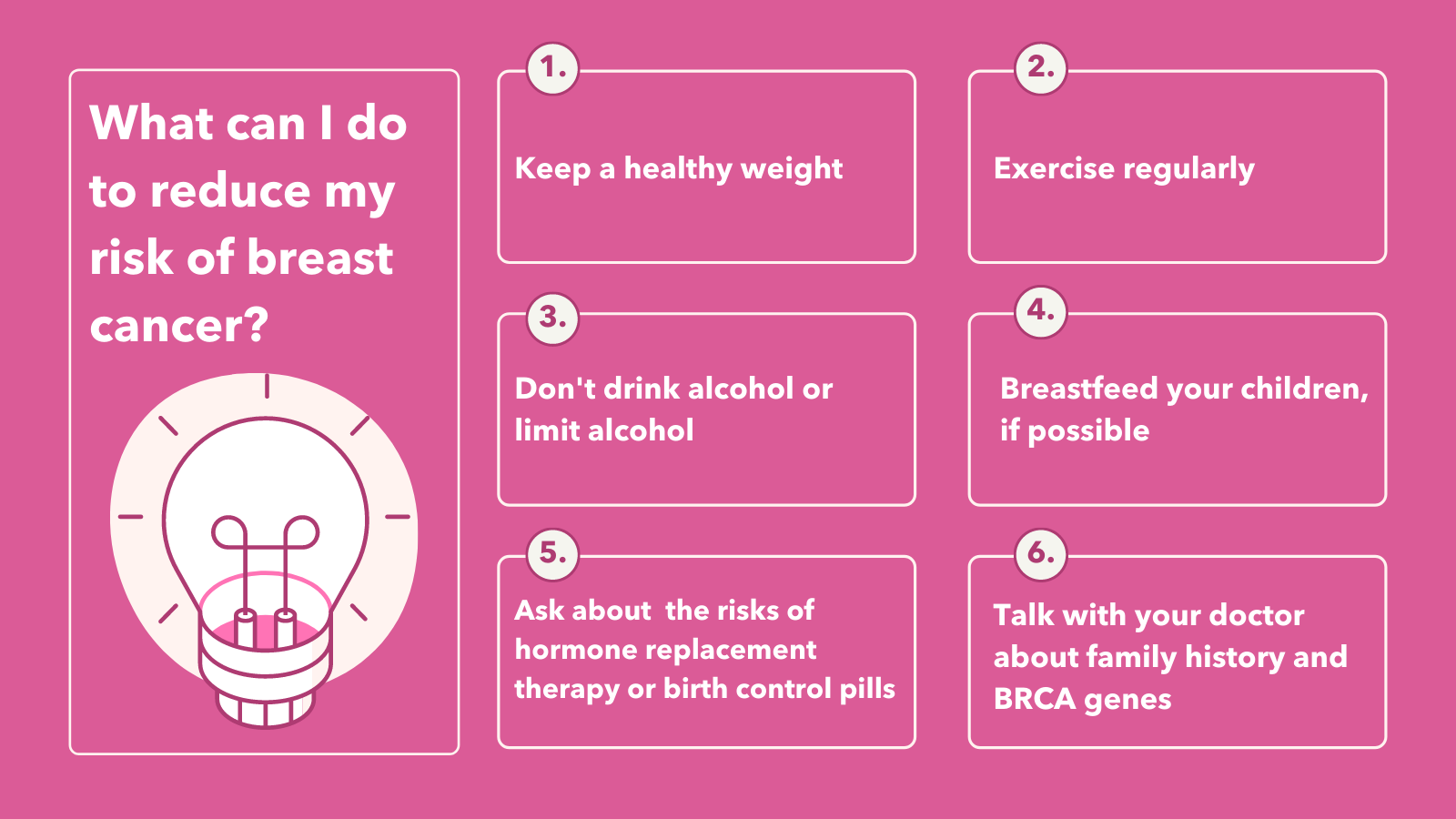
|
|
Under 45? 1 in 10 breast cancer survivors are diagnosed in this age range. Learn about risk factors and symptoms of breast cancer in young women: https://bit.ly/35rdmyS |
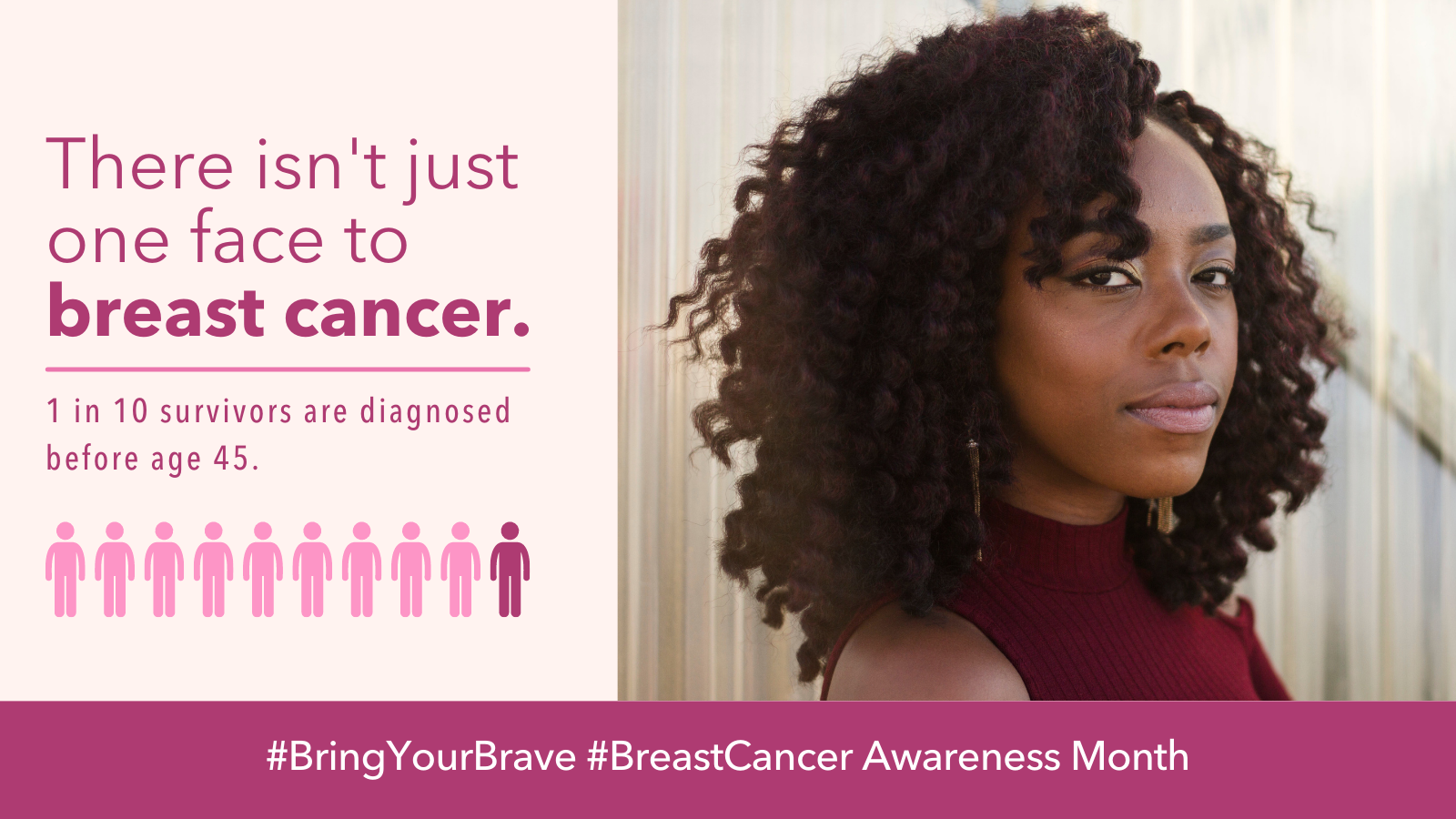
|
|
Been diagnosed with #breastcancer? Make treatment decisions in partnership with your loved ones and medical professionals. Work with your doctor to choose the best treatment plan for you: https://bit.ly/2WOnYTf #BCSM |
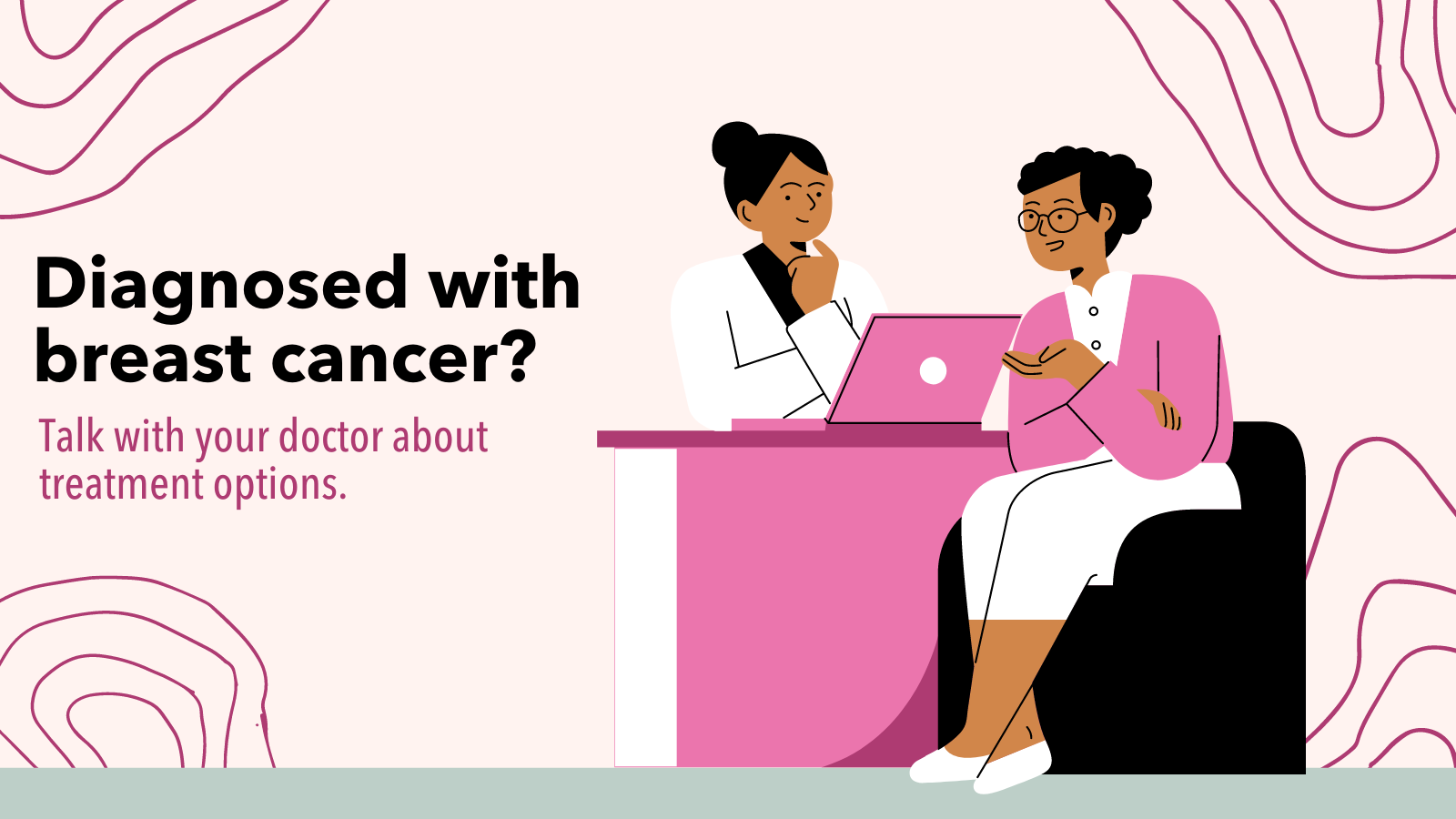
|
|
“I will keep getting my recommended mammograms, try to take better care of myself, get more exercise, and save the champagne cocktail for special occasions.” Dr. Mary White of @CDC_Cancer talks #breastcancer research developments and risk reduction: https://bit.ly/2CyVVAe |
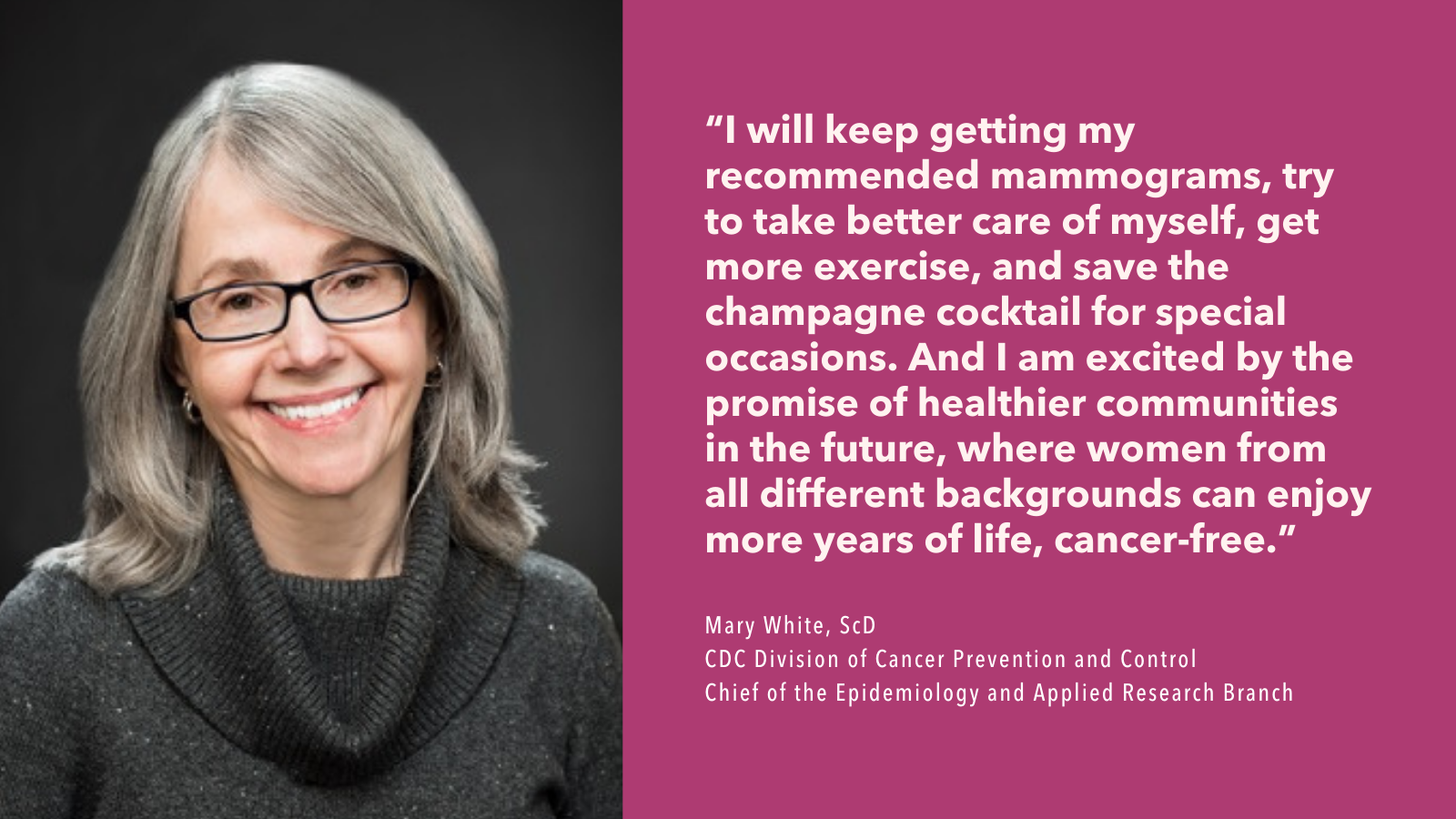
|
|
Though rare, men can get #breastcancer, typically between 60 and 70 years old. Health professionals, read @TheNCI’s guide to male breast cancer treatment for the risk factors, signs and other details: https://bit.ly/3hojN8A |
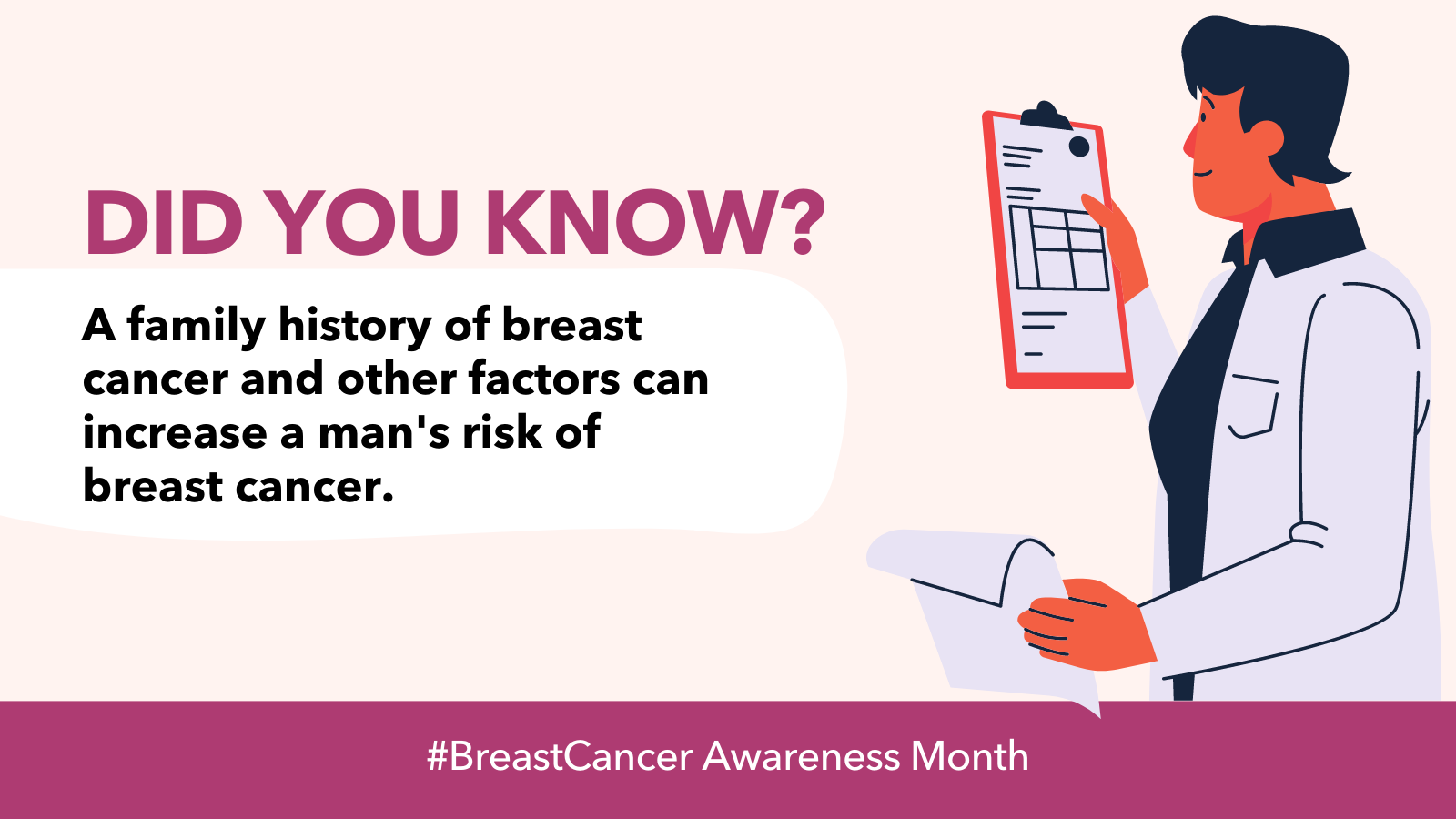
|
|
#Breastcancer survivors, call 1-800-QUIT-NOW (1-800-784-8669) to quit smoking. @CDCTobaccoFree offers help in English, Spanish, and Asian languages from: https://bit.ly/32mTsDf #CompCancer |
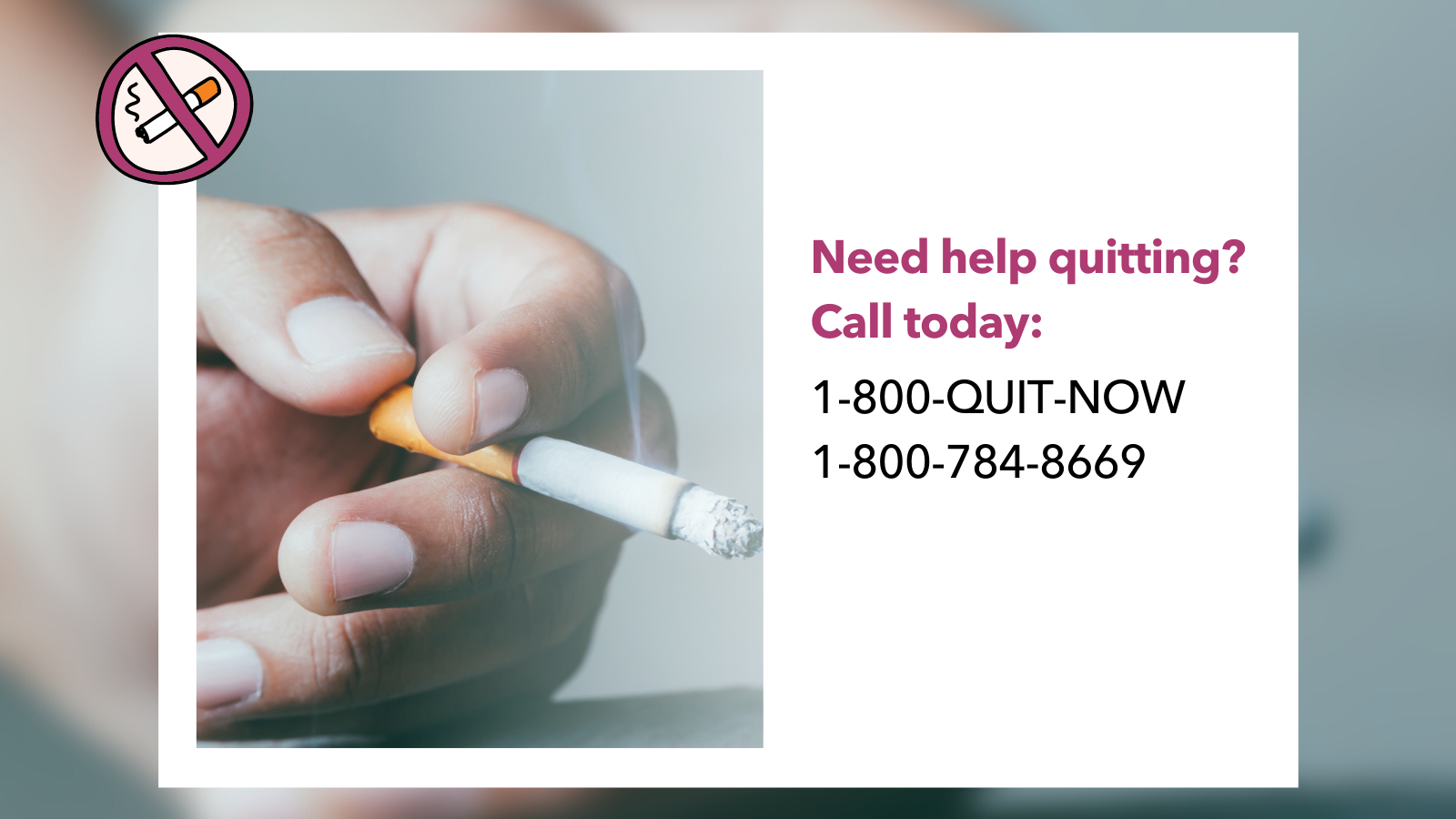
|
|
Providers: use the National Cancer Survivorship Resource Center Toolkit to strengthen your care for #breastcancer survivors. Check out the guidelines starting on page 11 and the checklist on page 14: https://bit.ly/3Jxz3iY |

|
|
Primary care providers (@aafp): study how to best care for adult-onset #breastcancer survivors using @GWCancer Center’s Cancer Survivorship E-Learning Series: Module 9. Access the clinical follow-up care guideline: https://bit.ly/2Naalsc #BCSM |

|
|
Mammograms are x-ray images that can often find #breastcancer when there are no signs or symptoms. Got questions? Read the @TheNCI’s answers: http://bit.ly/2Kh7ted #BCSM |
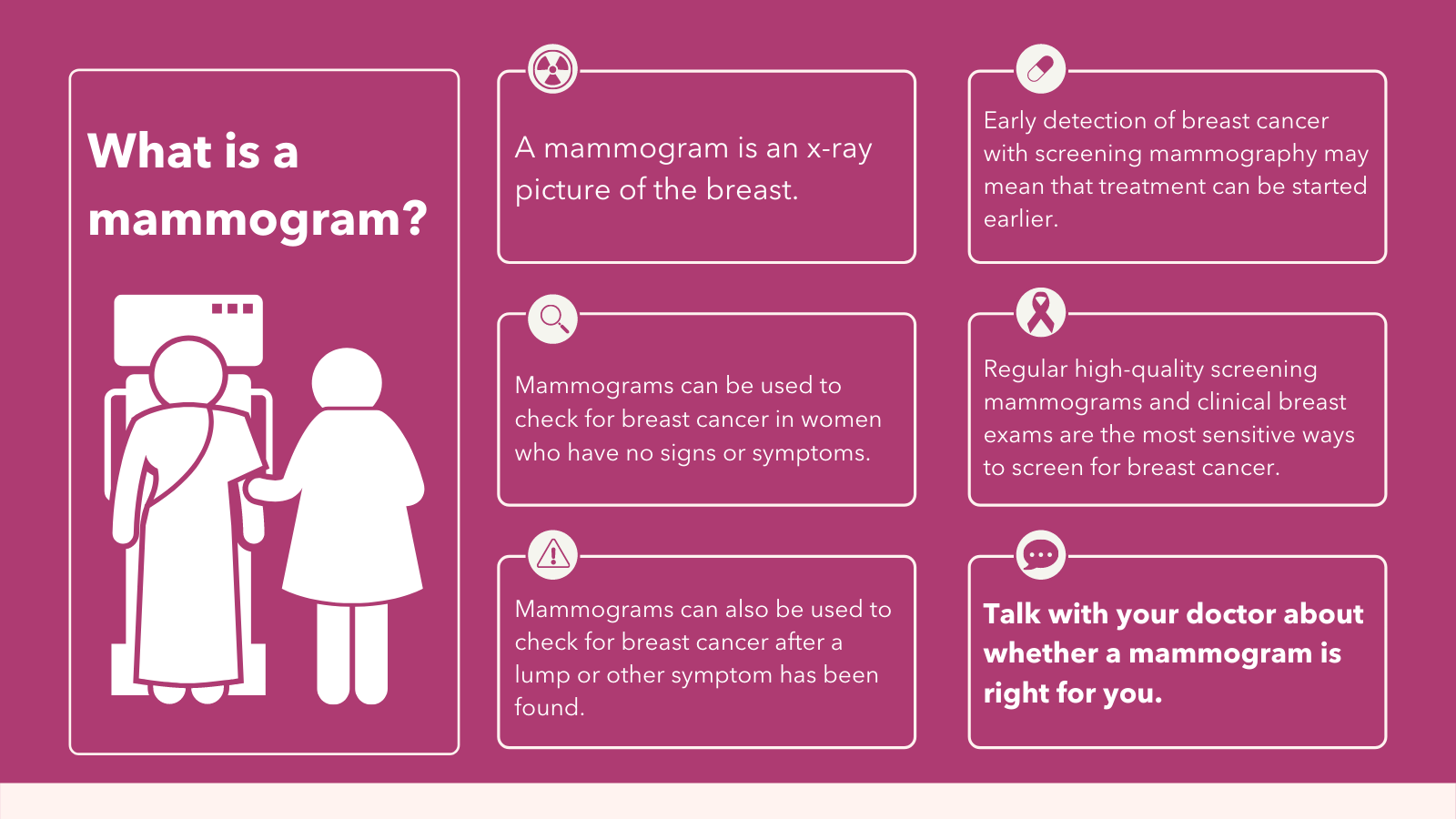
|
|
The Cancer Information Service from @TheNCI helps patients, health care professionals, friends and family get cancer information in English or Spanish. Chat, call or email today: http://bit.ly/2LkhvZM #BCSM #CompCancer |
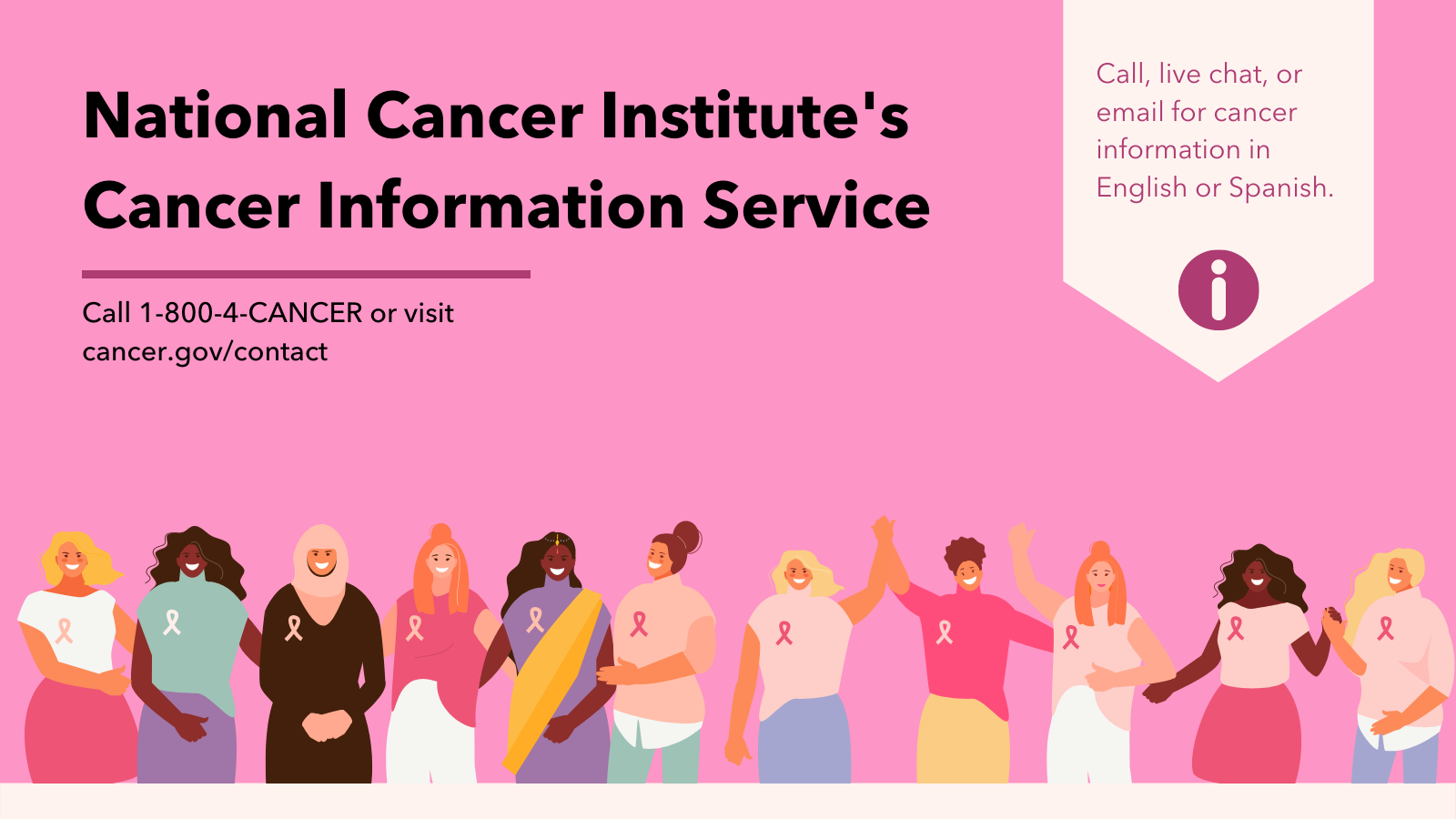
|
|
If you are transfeminine, age 50+ with 5+ years of hormonal therapy, talk to your doctor about #breast cancer screening. |

|
|
If you are transmasculine without top surgery, get screened for #breastcancer. Too much T can put you at greater risk, too. |
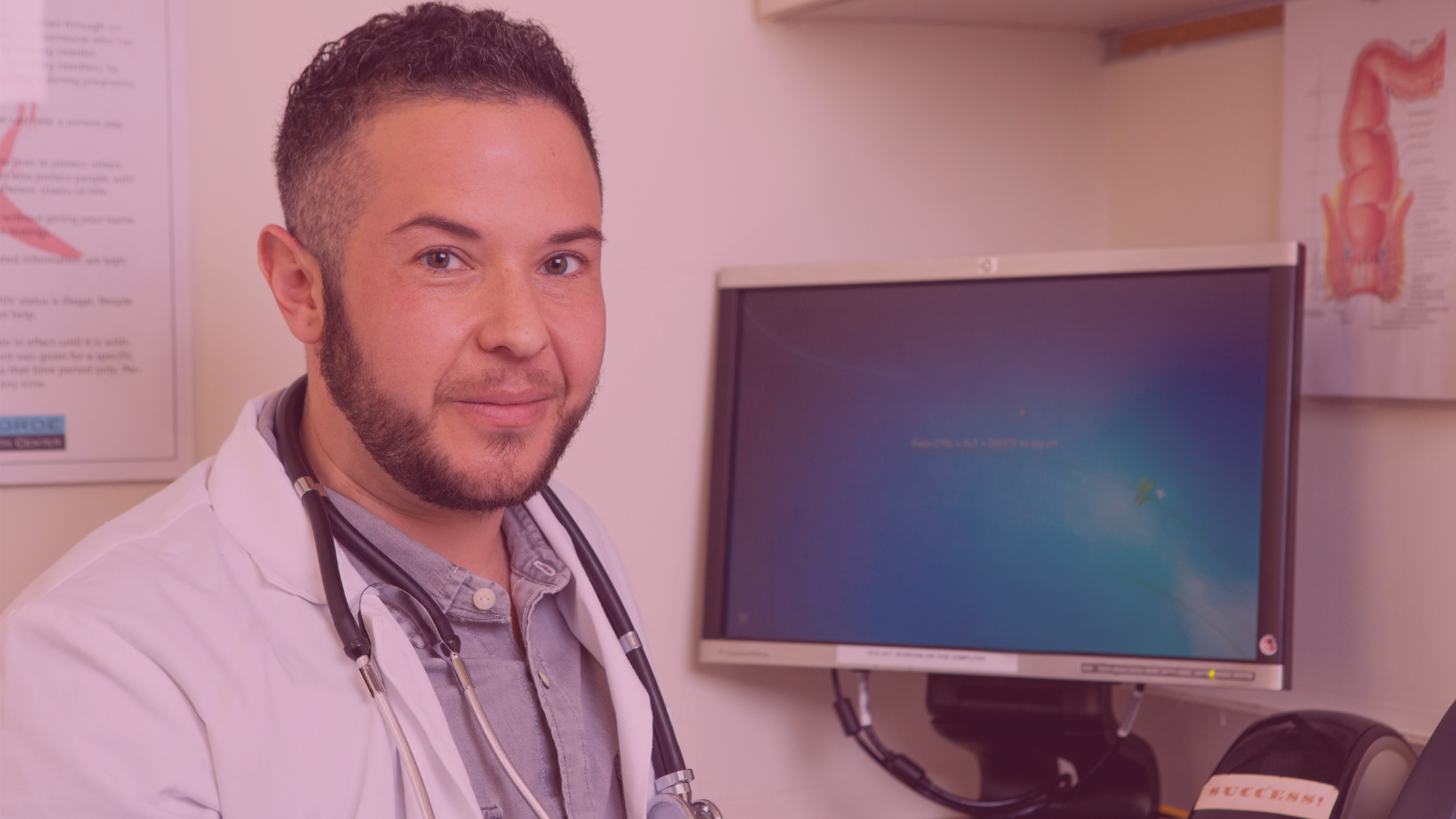
|
|
#Breastcancer is a leading cause of cancer death among African American women. Wondering what you can do? Review a suggested action plan for breast health from @AABCA_Mpls: https://bit.ly/4bsjGon #BCS |

|
|
Cancer doesn't wait and neither should you. Routine cancer screening is important, even during a pandemic: https://bit.ly/39HKbIN |
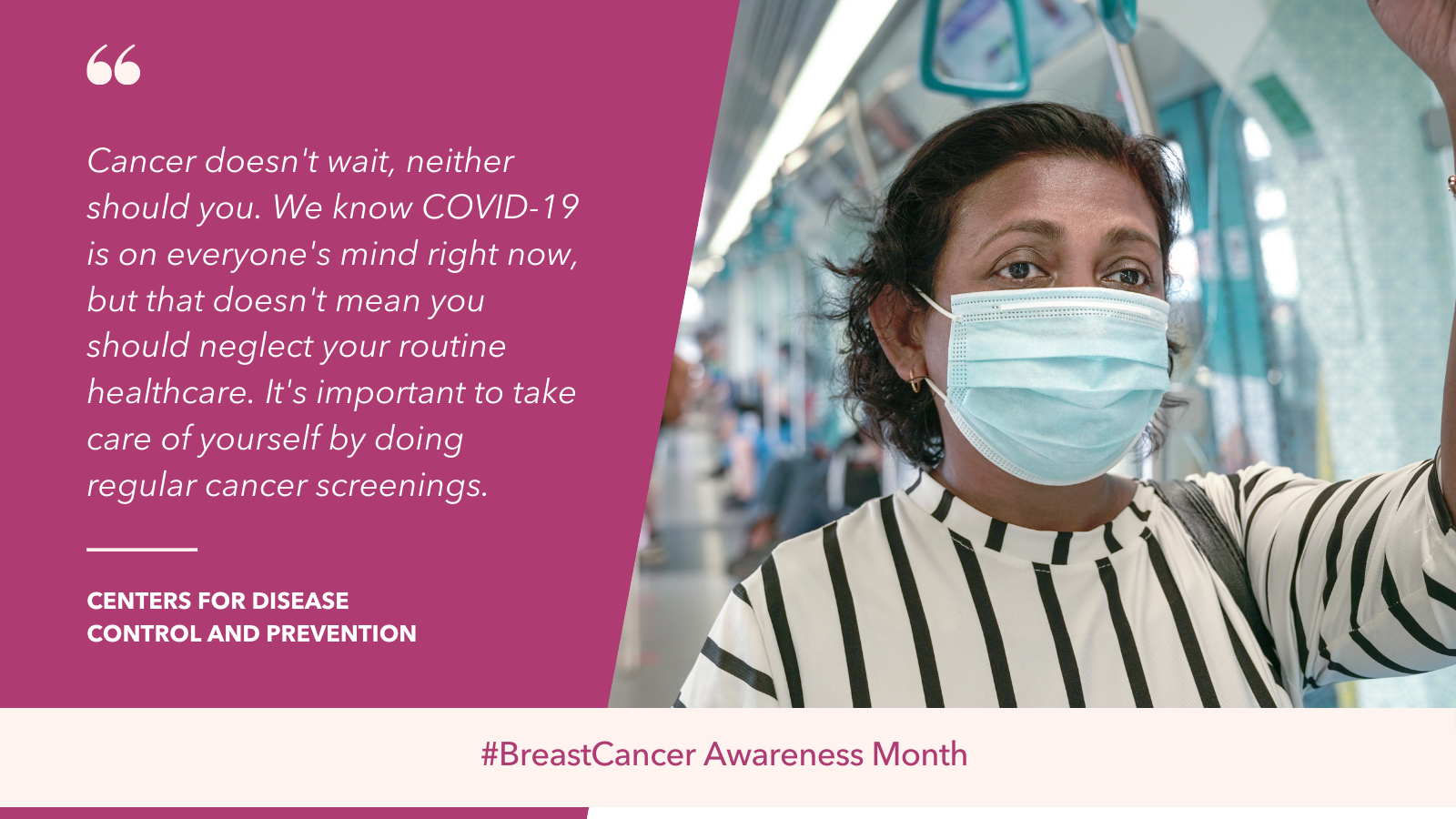
|
- How to post on Facebook
-
- Download the suggested graphic.
- Highlight the corresponding message with your cursor. Right click and select "Copy."
- Open Facebook. If you aren't already logged in, enter your email address (or phone number) and password, then tap "Log in."
- Tap the post box. This box is at the top of the News Feed. If you're posting to a group, you'll find the box just below the cover photo. There will generally be a phrase like "Write something" or "What's on your mind?" in the box.
- Tap "Photo/Video" near the middle of the post screen, then select the downloaded graphic to upload and tap "Done." Doing so adds the photo to your post.
- Tap "Post." It's in the top-right corner of the screen from the app, or the bottom-right from your computer. Doing so will create your post and add it to the page you're on.
| Message | Suggested Graphic |
| October is #BreastCancer Awareness Month. Did you know that breast cancer is the second most common cancer for U.S. women, following some types of skin cancers? Read the facts about your risk at https://bit.ly/3hmFfup |
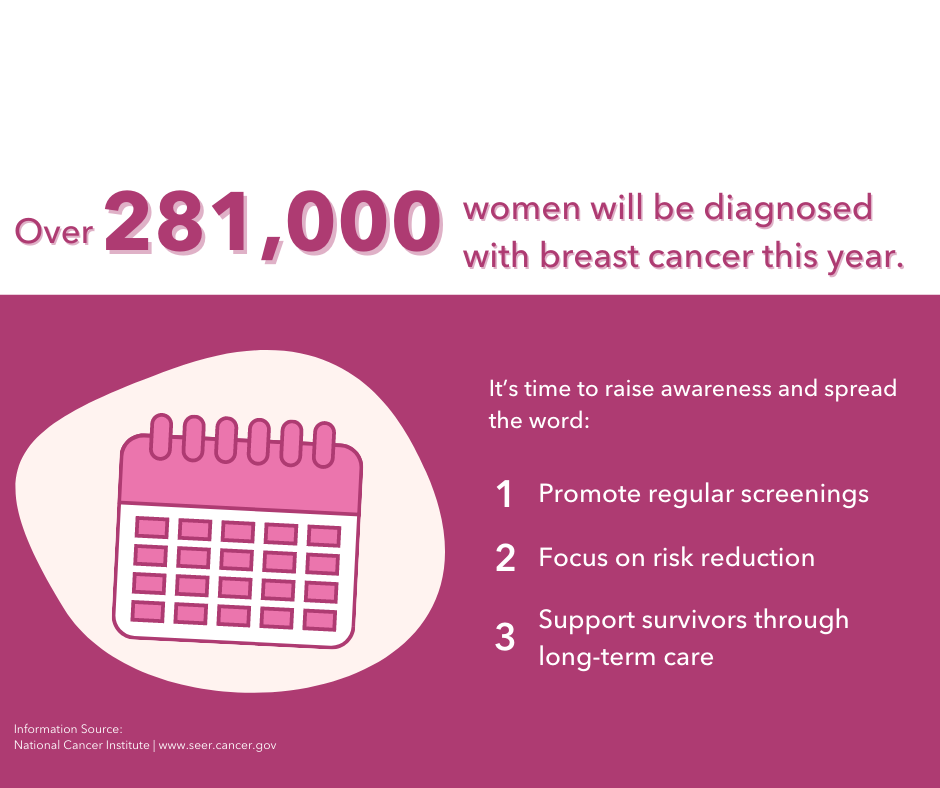
|
| Interested in learning which #breastcancer clinical trials might be right for you? Use NCI’s searchable database of clinical trials: http://bit.ly/329Hhq7 |
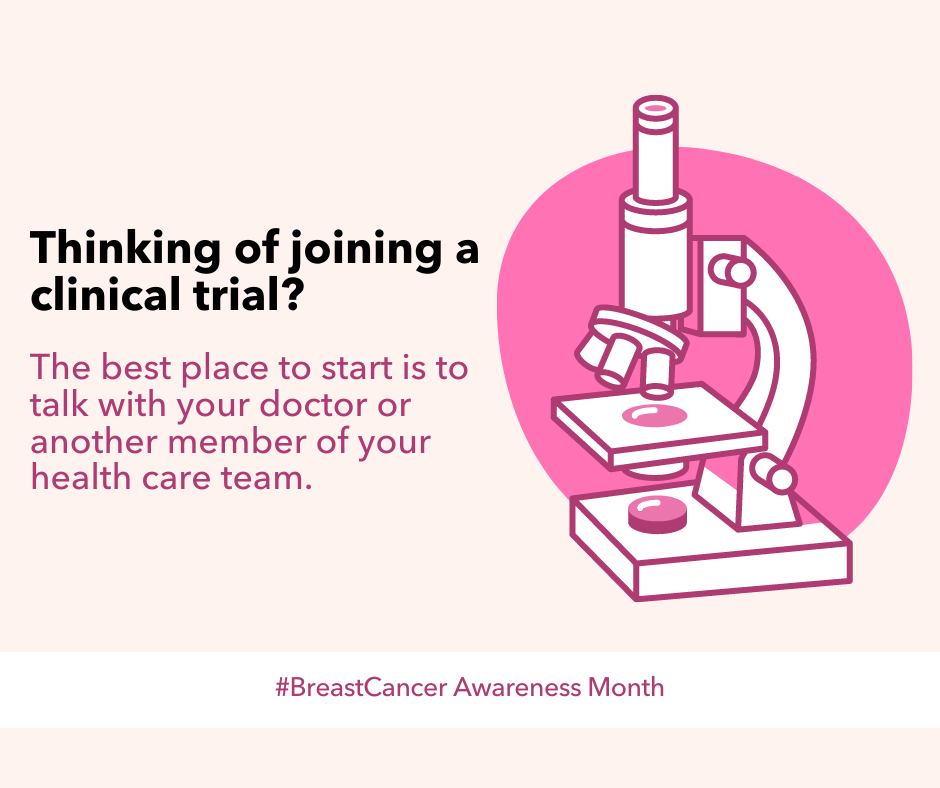
|
| Did you know there are things that you can do to reduce your chance of getting #breastcancer? Ask your doctor about reducing your risk by considering your family history and making healthy choices such as getting regular exercise and not using tobacco. The CDC has helpful suggestions: http://bit.ly/2Kz4b5q |

|
| Under 45? 1 in 10 breast cancer survivors are diagnosed in this age range. Visit the Bring Your Brave campaign for more information on risk factors and symptoms of breast cancer in young women: https://bit.ly/35rdmyS |
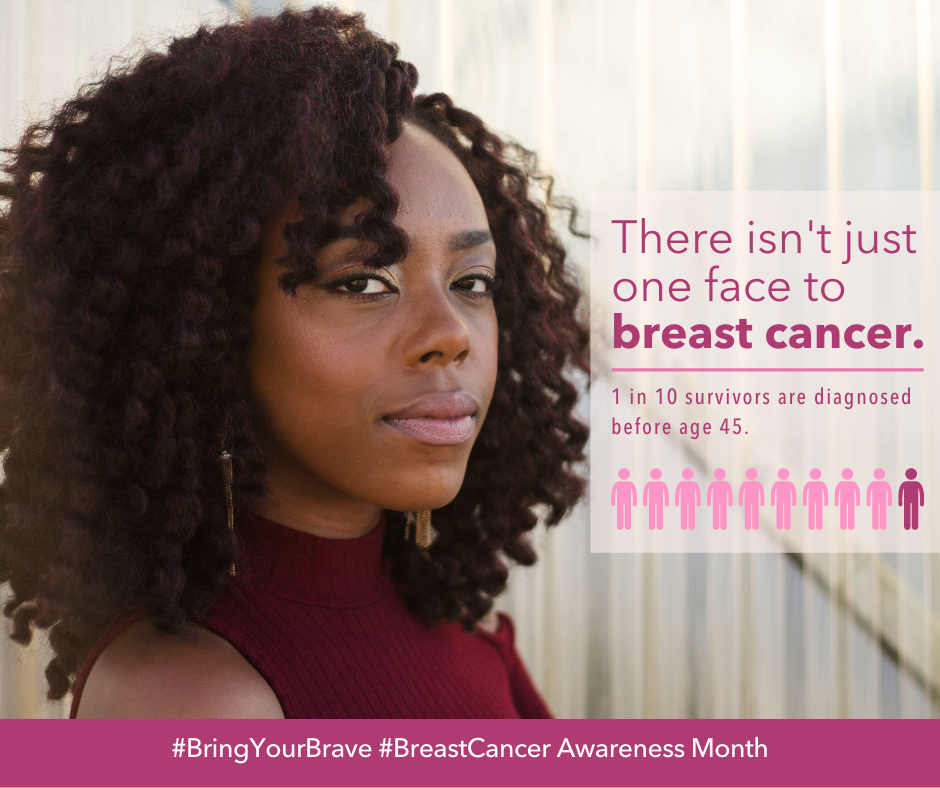
|
| If you’ve been diagnosed with #breastcancer, consider your treatment in partnership with your family and doctors. Learn about potential treatment options and work with your doctor to find the plan that matches your cancer and your priorities: https://bit.ly/2WOnYTf |
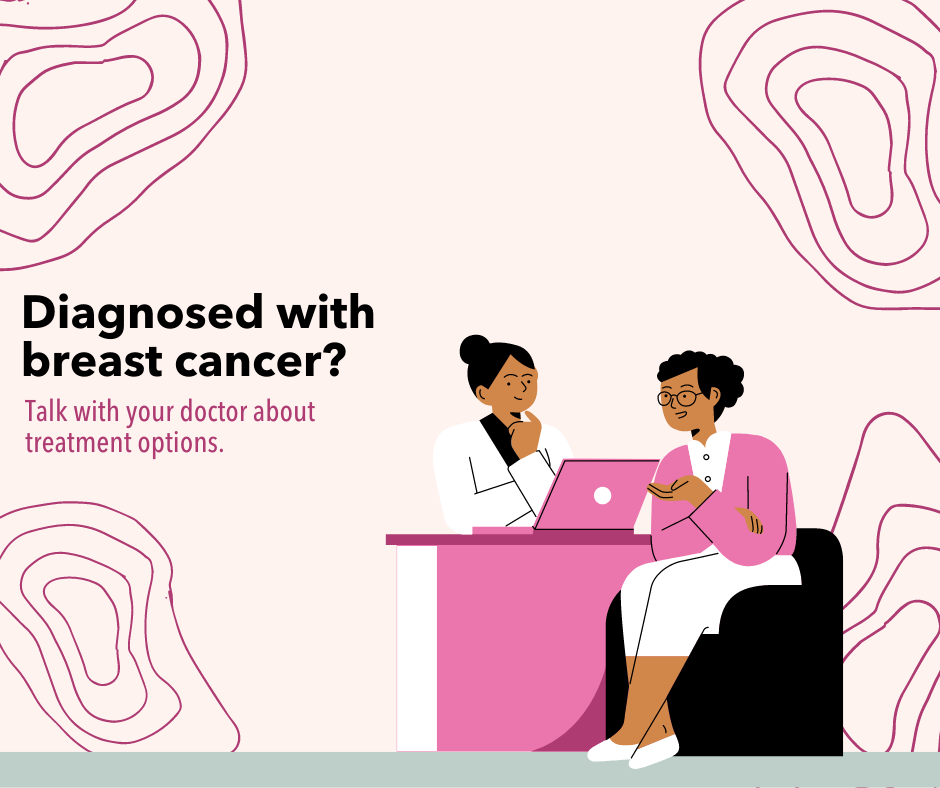
|
| “I will keep getting my recommended mammograms, try to take better care of myself, get more exercise, and save the champagne cocktail for special occasions.” Dr. Mary White comments on #breastcancer research developments and the importance of risk reduction on CDC’s The Topic Is Cancer blog: https://bit.ly/2CyVVAe |
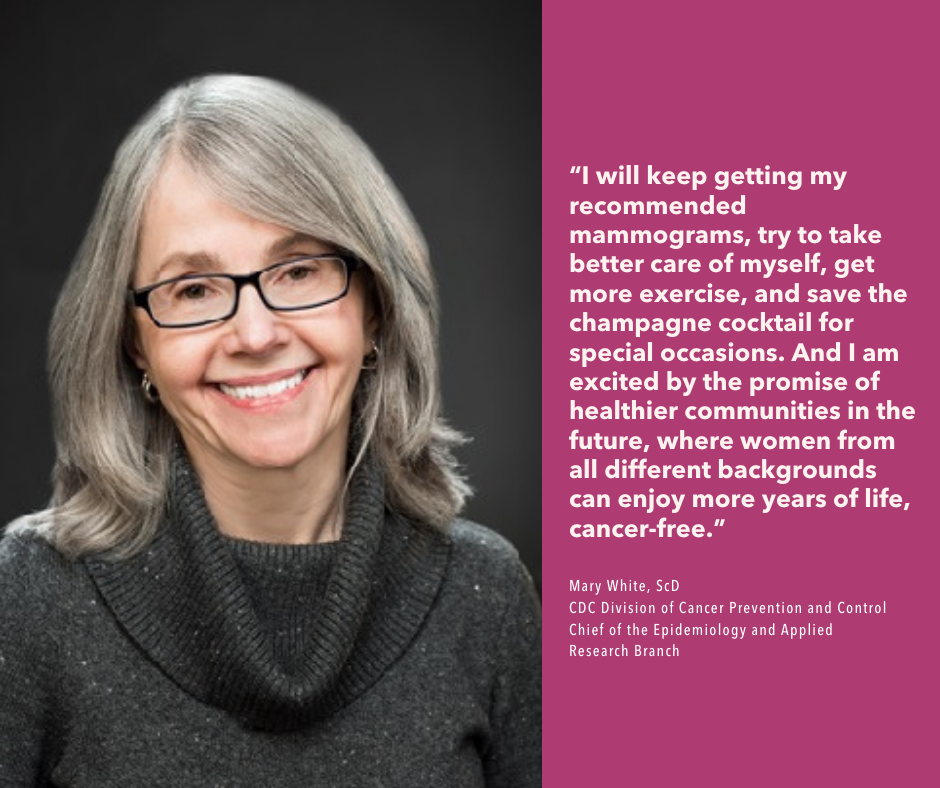
|
| Providers, men can also get #breastcancer, typically between 60 and 70 years old. The NCI’s helpful guide to male breast cancer treatment covers the risk factors, signs and other important information: https://bit.ly/3hojN8A |
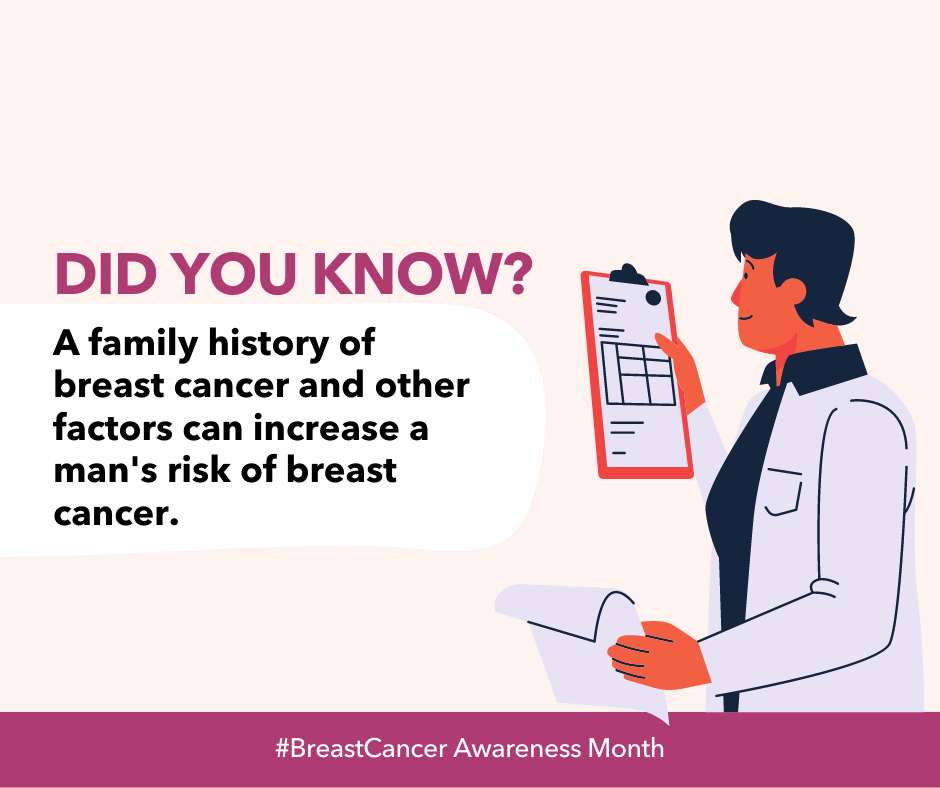
|
| Did you know that quitting smoking is recommended for #breastcancer survivors? Call 1-800-QUITNOW (1-800-784-8669) or visit the CDC’s webpage for more resources on quitting smoking: https://bit.ly/32mTsDf |

|
| Providers: use the National Cancer Survivorship Resource Center Toolkit to provide the best possible care for #breastcancer survivors. Check out the survivorship care guideline summary starting on page 11 and the care checklist on page 14: https://bit.ly/3Jxz3iY |
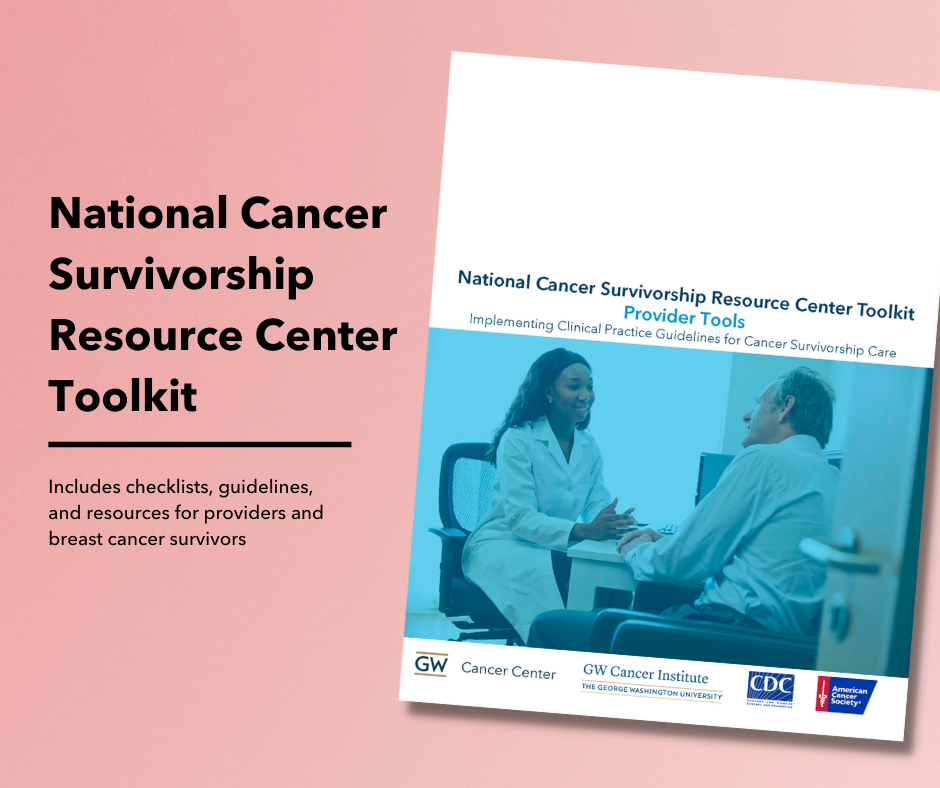
|
| Primary care providers: invest in giving the best care for your adult-onset #breastcancer survivors by taking the free Cancer Survivorship E-Learning Series from GW Cancer Center. Module 9 is all about the clinical follow-up care guideline: https://bit.ly/2Naalsc |

|
| Mammograms are x-ray images that can often find #breastcancer when there are no signs or symptoms. Did you know that there are two types of mammograms? The NCI has all the mammogram info you need in one place: http://bit.ly/2Kh7ted |
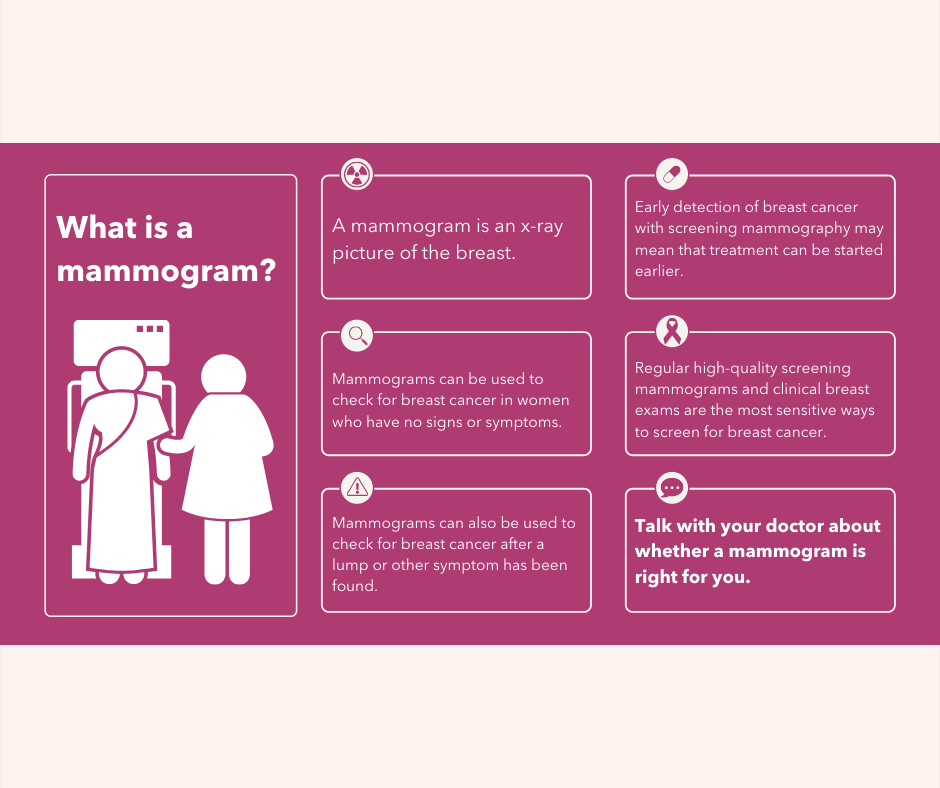
|
| Specialists at NCI’s Cancer Information Service can help patients, health care professionals, friends and family find cancer information in English and Spanish. Reach out by chat, call or email: http://bit.ly/2LkhvZM #CompCancer |
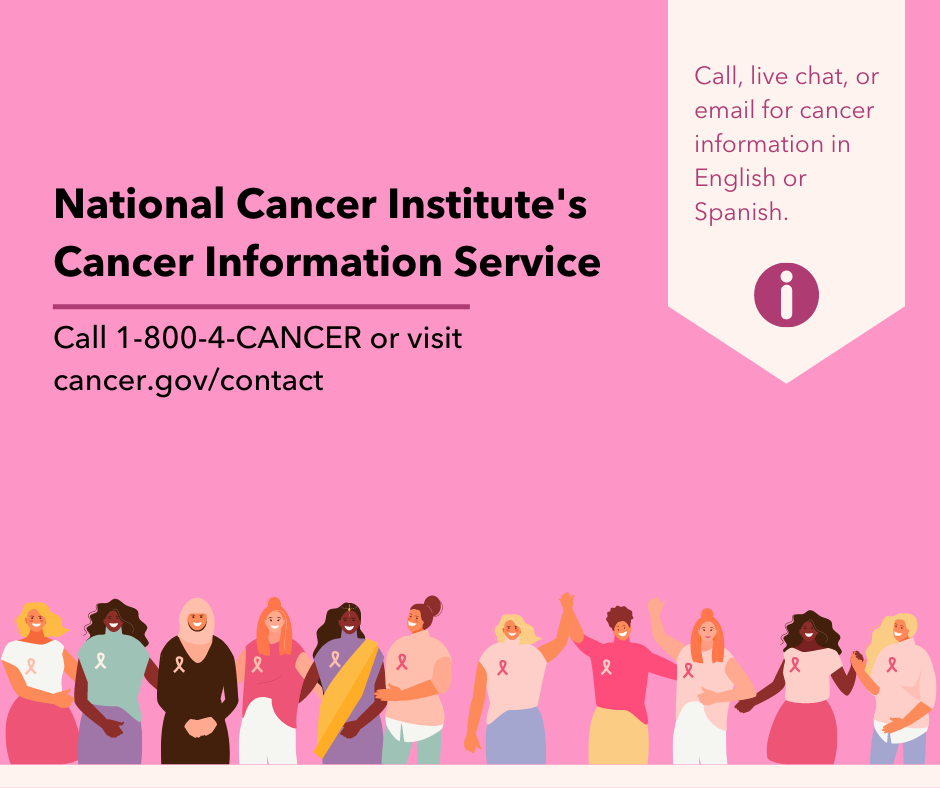
|
| Medical providers: Carefully consider breast cancer screening needs of #LGBTQ patients. After age 50, transgender men with breast tissue and transgender women who have had at least 5 years of estrogen/progestin hormonal therapy should follow the same guidelines for breast cancer screening as cisgender women https://bit.ly/3kaDDp0 |

|
| Medical providers: Did you know women who partner with women have higher risk indicators for breast cancer, including higher rates of nulliparity, obesity, and tobacco and alcohol use? Learn more at https://bit.ly/3bWbIq8 |

|
| Among African American women, #breastcancer is a leading cause of cancer death. Review this fact sheet about breast cancer from the African American Breast Cancer Alliance, Inc. to develop your own, practical breast health action plan: https://bit.ly/4bsjGon #BCSM |

|
| Cancer doesn't wait and neither should you. Routine cancer screening is important, even during a pandemic. Talk to your doctor today if you are due for a mammogram: https://bit.ly/39HKbIN |
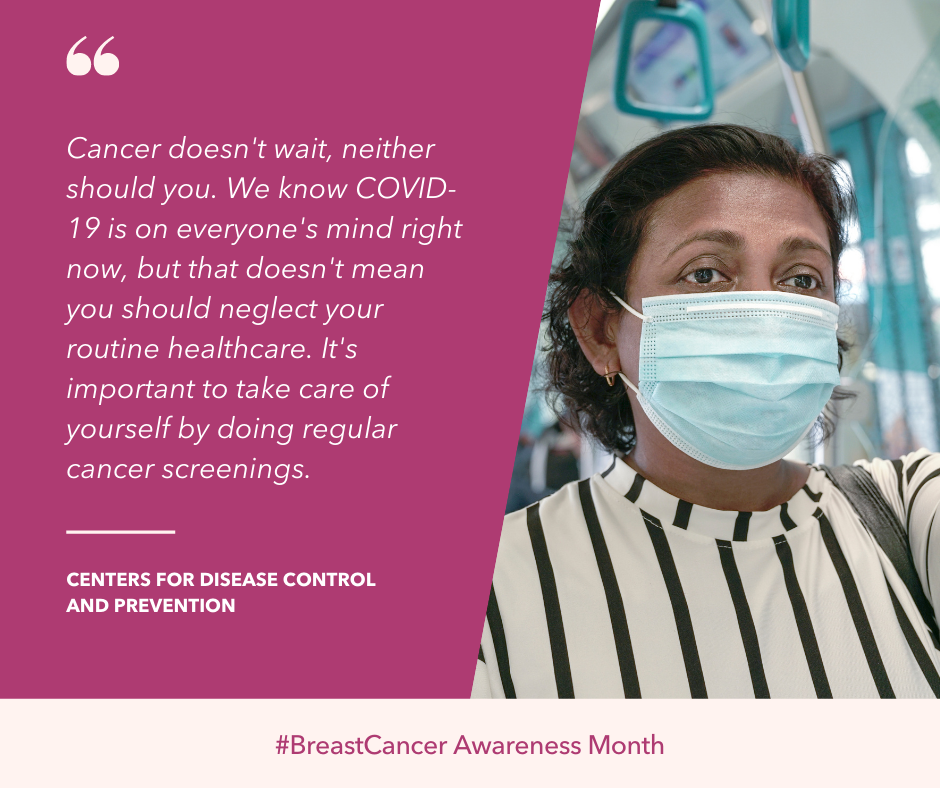
|
- How to Post on LinkedIn
-
- Download the suggested graphic.
- Highlight the corresponding message with your cursor. Right click and select "Copy."
- Open LinkedIn. If you aren't already logged in, enter your email address and password, then tap "Log in."
- Tap "Start a post" from the main share box. This box is at the top of your profile.
- Tap "Photo" from the top of the post screen, then select the downloaded graphic to upload and tap "Done." Doing so adds the photo to your post.
- Tap "Post." It's in the the bottom-right. Doing so will create your post and add it to the page you're on.
| Message | Suggested Graphic |
| African Americans are often underrepresented in clinical trials. This can make #cancer guidelines less helpful to minorities. To join a clinical trial or learn about research already underway, review the National Cancer Institute’s database: http://bit.ly/329Hhq7 |
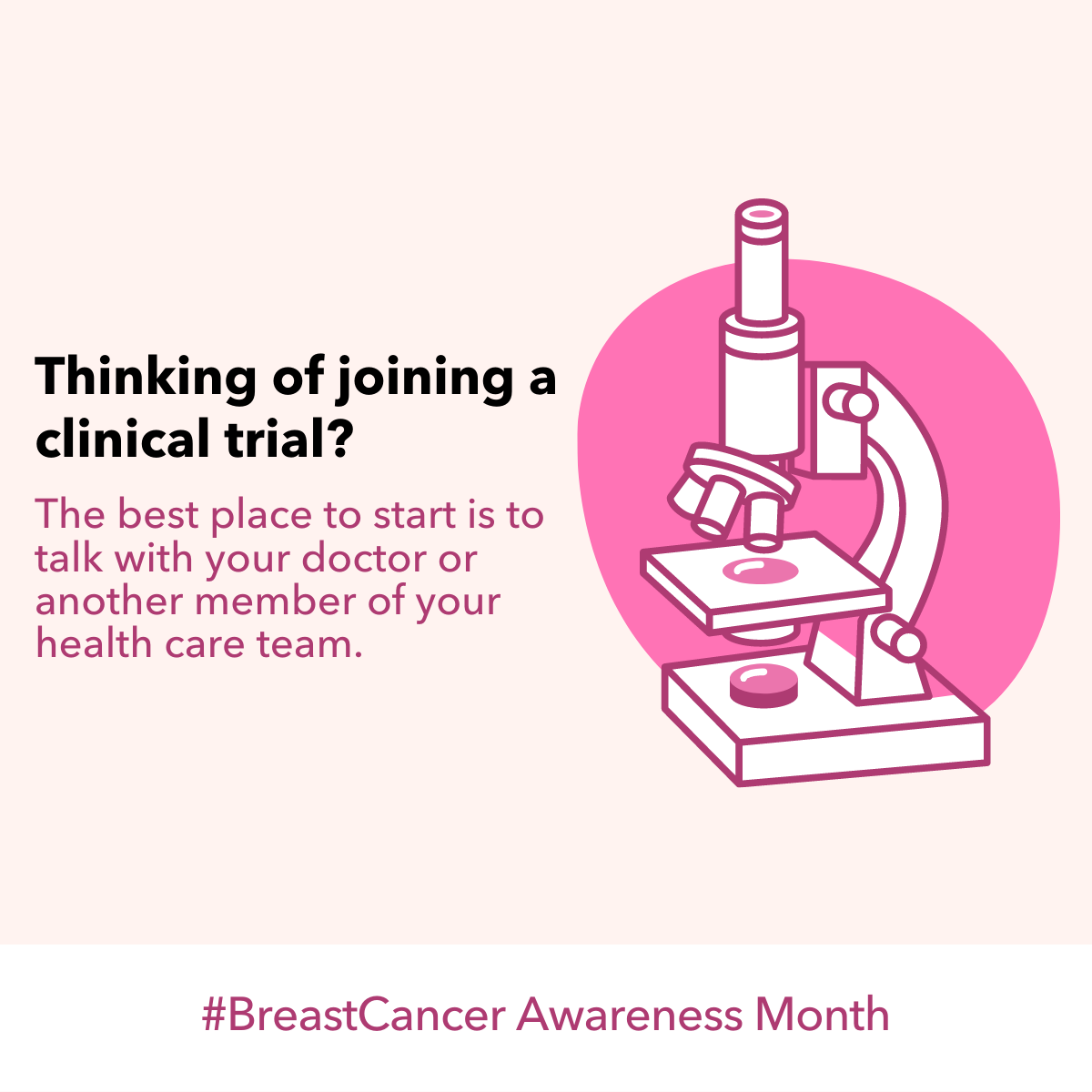
|
| October is Breast #Cancer Awareness Month. Learn about the breasts, cancer screening, breast cancer during pregnancy, and access the latest breast cancer research and statistics from the National Cancer Institute: https://bit.ly/2WQIq5P |
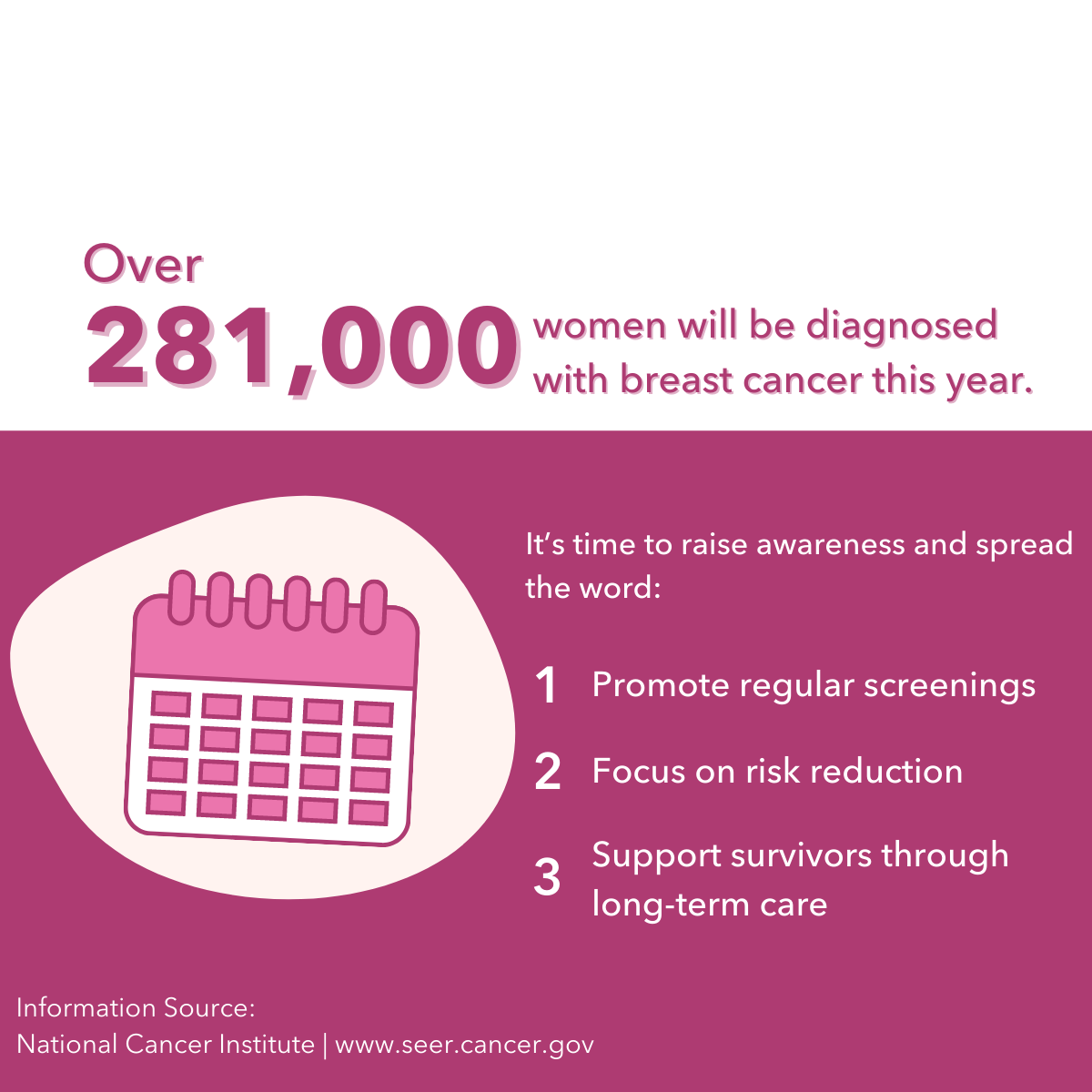
|
| Providers: use the National Cancer Survivorship Resource Center Toolkit to optimize survivorship care for breast #cancer survivors. Review the guidelines on page 11-13 and then use the checklist on pages 14-16 with your patients: https://bit.ly/3Jxz3iY |

|
| The free George Washington University Cancer Center #Cancer Survivorship E-Learning Series for Primary Care Providers empowers clinicians to give adult-onset cancer survivors the best care. Module 9 is a “Spotlight on Breast Cancer Survivorship.” Review it in honor of Breast Cancer Awareness Month: https://bit.ly/2Naalsc |
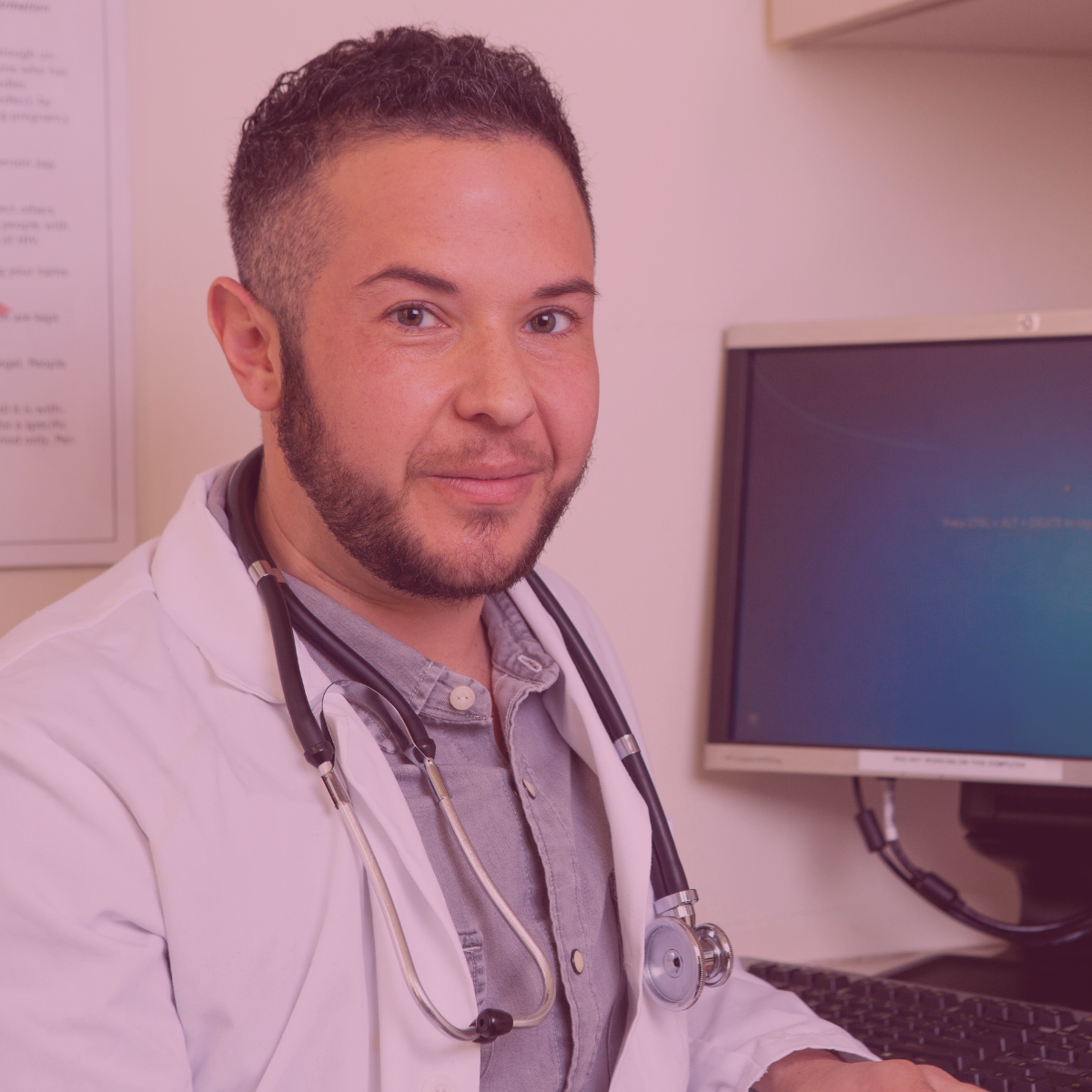
|
| American women generally have a 1 in 8 risk of getting breast #cancer. Consider your personal risk level using this assessment from the National Cancer Institute and then talk to your doctor: http://bit.ly/2lFj8os |
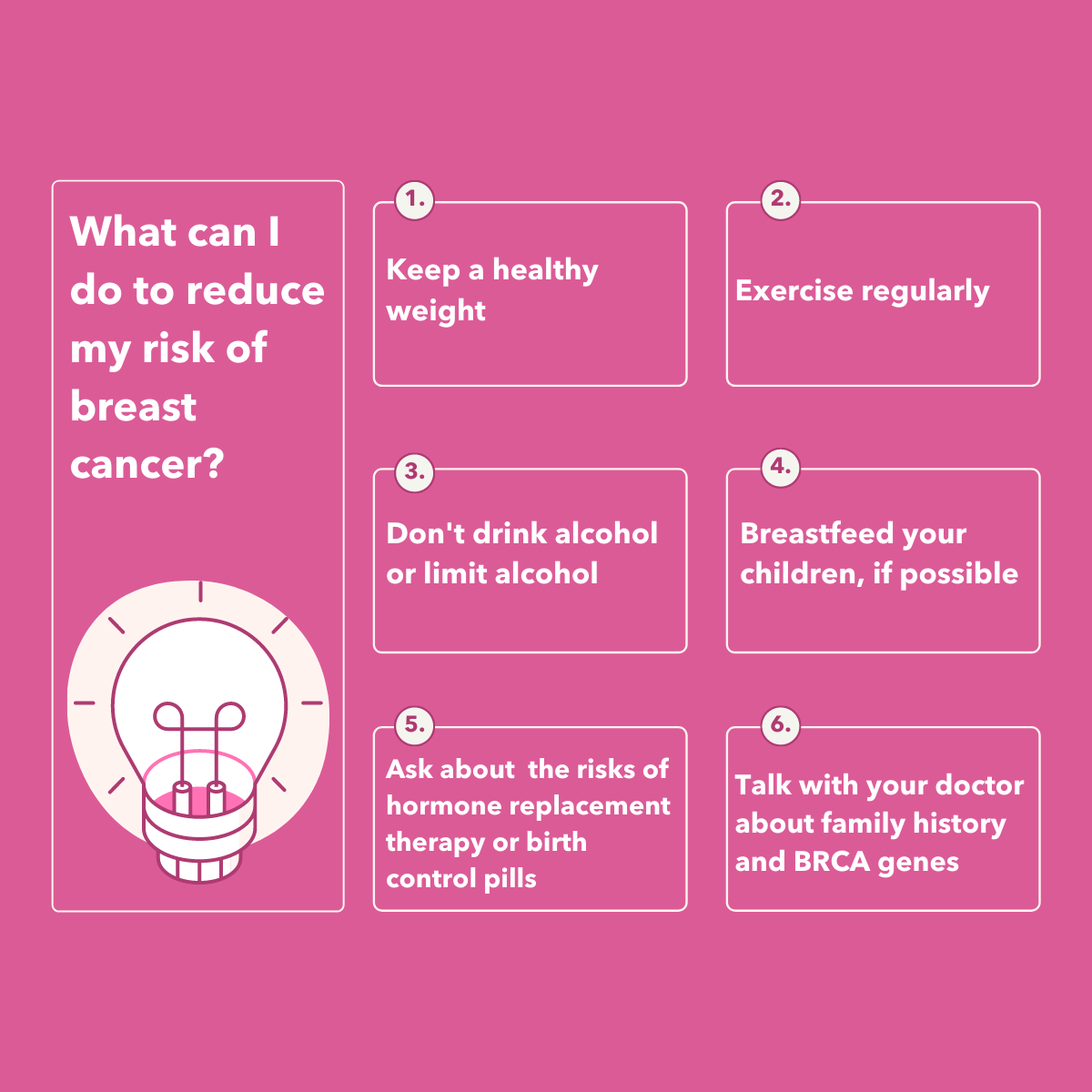
|
| Medical providers: Did you know women who partner with women have higher risk indicators for breast cancer, including higher rates of nulliparity, obesity, and tobacco and alcohol use? Learn more at https://bit.ly/3bWbIq8 |

|
| Employment, health insurance coverage and delays in care affect financial challenges associated with breast cancer. This fact sheet from SelfMade Health Network highlights some of the barriers for low socioeconomic status patients facing a breast cancer diagnosis: https://bit.ly/3zlvG86 |
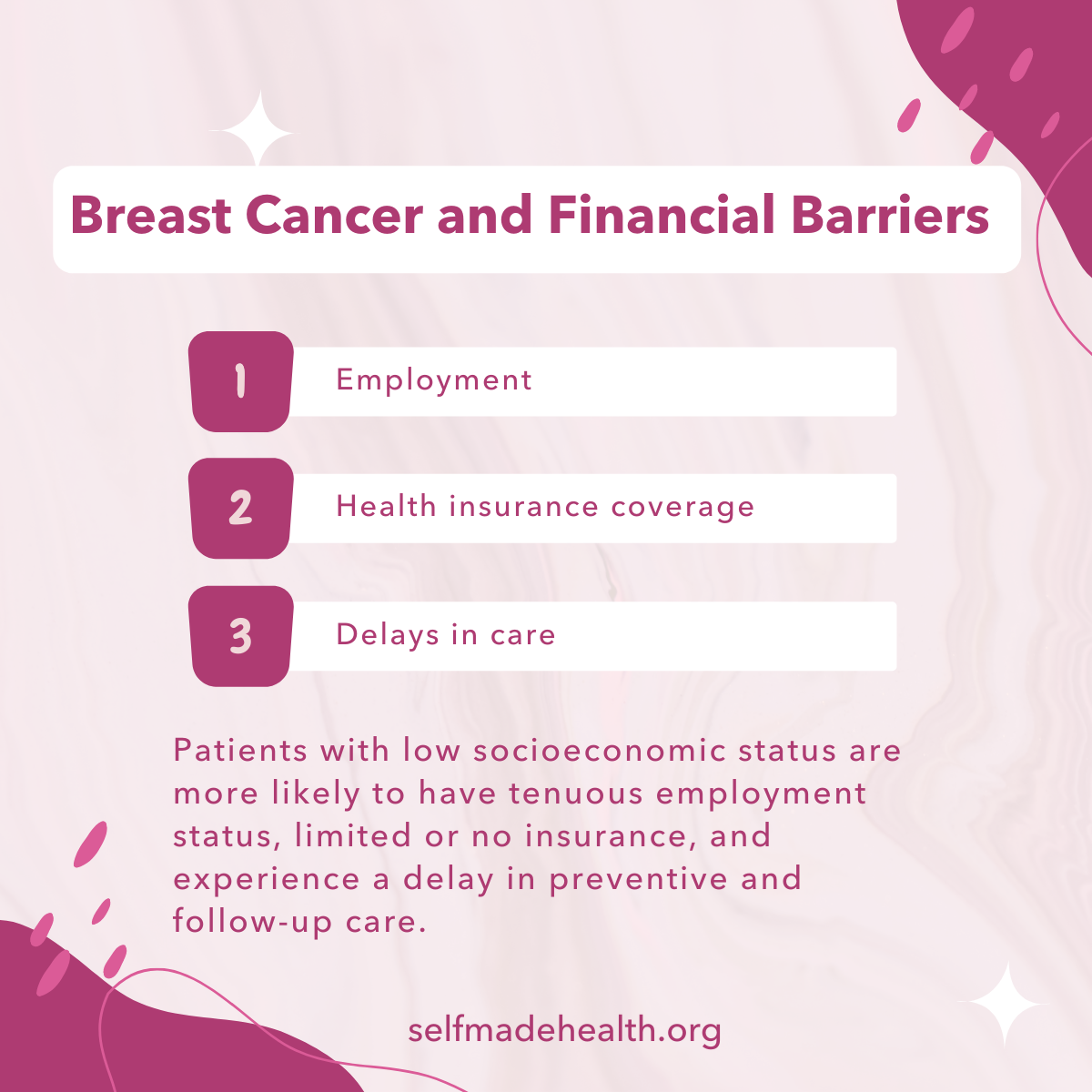
|
| Providers: Review breast cancer survivorship care guidelines from the American Cancer Society and the American Society of Clinical Oncology: http://bit.ly/BrCaCare |

|
| Although breast cancer mostly occurs in older women, in rare cases, breast cancer affects women under the age of 45. Learning what factors increase your chance of getting breast cancer is an important first step in assessing your risk. Learn more: https://bit.ly/3kQwu0y |
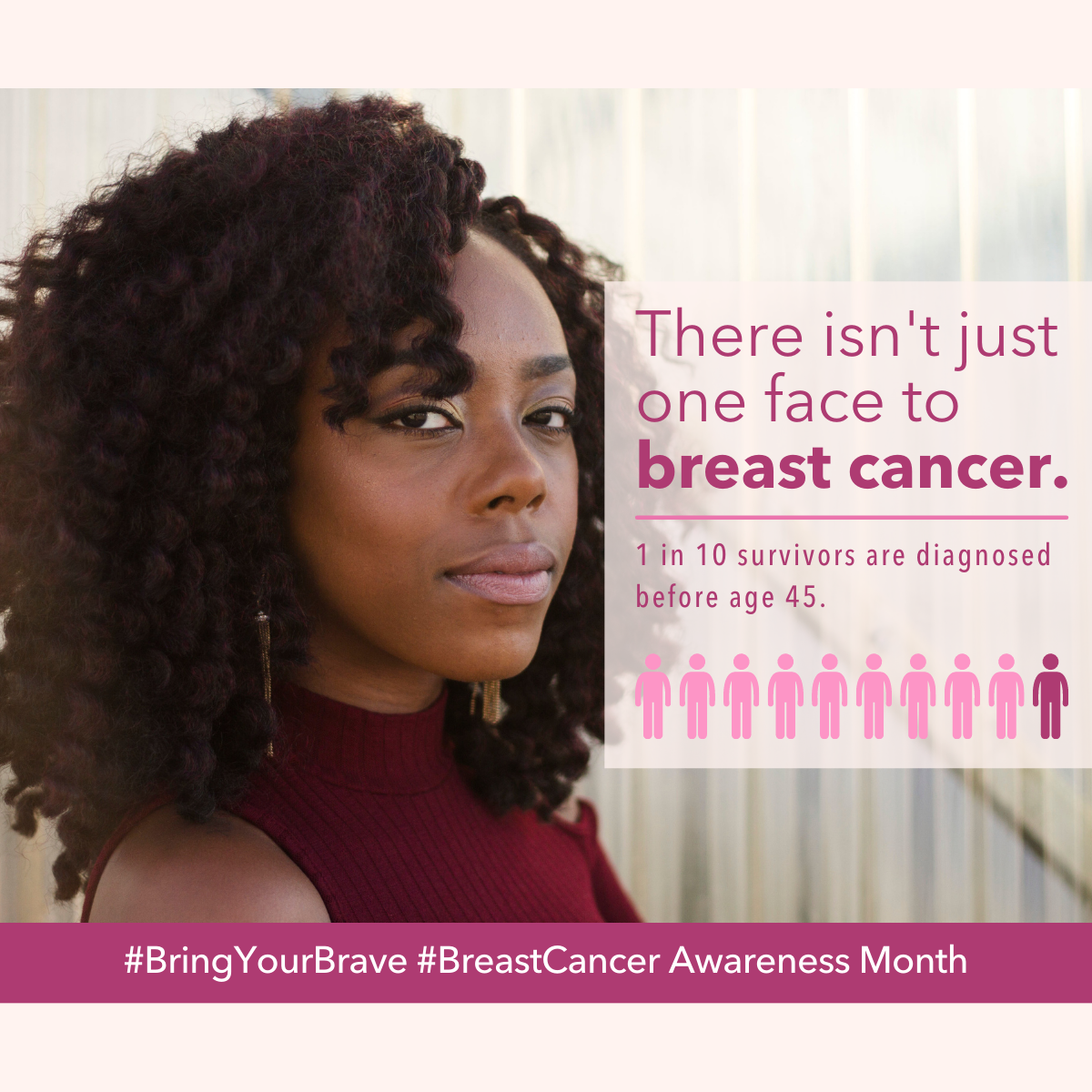
|
| About 5-10% of breast cancers are hereditary, meaning cancer runs in your family, and could be caused by a change in certain genes that you inherited from your mother or father. Learn more about BRCA genes and their connection to breast cancer: https://bit.ly/2CXuj7v |

|
| Providers: Remind your patients about the importance of routine cancer screening, even during a pandemic: https://bit.ly/39HKbIN |

|
- How to Post on Instagram
-
- Download the suggested graphic.
- Highlight the corresponding message with your cursor. Right click and select "Copy."
- Open Instagram. If you aren't already logged in, enter your username (or phone number) and password, then tap "Log in."
- Tap the plus sign box. This box is at the top right. Select the downloaded graphic or drag it into the box to upload it.
- Select "Square (1:1)" for the aspect ratio, then click "Next."
- Ignore the filters screen, then click "Next" again.
- Paste the caption where it says, "Write a caption..." at the top.
- Under "Accessibility," consider adding alt text to describe the photo for people with visual impairments.
- Tap "Share." It's in the bottom-right corner of the screen.
Download All Messages and Graphics
Social media management tools like Hootsuite and Sprout Social offer bulk scheduling options for uploading multiple messages at once. The spreadsheet below can be adapted to fit multiple scheduling platforms or services. It is currently formatted to work with Sprout Social's bulk scheduling option. Please review the bulk scheduling format requirements for your specific platform before posting. Messages are sorted by network.
Download All Facebook Messages
Download All LinkedIn Messages
Download All Instagram Messages
If you would like to download all images in this awareness month campaign, click on each network below for a zip file with each network's graphics. Please note that these image sizes are slightly smaller than the links above due to file size limitations. If you would like to download full resolution versions, simply click on the "Download Graphic" link below each image in the message tables above.
Download All Facebook Graphics
Download All LinkedIn Graphics
Download All Instagram Graphics
References
Black, K. Z., Eng, E., Schaal, J. C., Johnson, L., Nichols, H. B., Ellis, K. R., Rowley, D. L. (2020). The other side of through: Young breast cancer survivors' spectrum of sexual and reproductive health needs. Qualitative Health Research, 30(13), 2019-2032. https://doi.org/10.1177/1049732320929649
Brown, M. T., and McElroy, J. A. (2018). Sexual and gender minority breast cancer patients choosing bilateral mastectomy without reconstruction: "I now have a body that fits me". Women and Health, 58(4), 403-418. https://doi.org/10.1080/03630242.2017.1310169
Centers for Disease Control and Prevention. (2019). Basic information about breast cancer. Retrieved August 6, 2021 from https://www.cdc.gov/cancer/breast/basic_info/index.htm
Centers for Disease Control and Prevention. (2021). Breast cancer statistics. Retrieved August 6, 2021 from https://www.cdc.gov/cancer/breast/statistics/index.htm
Joseph-Williams, N., Elwyn, G., Edwards, A. (2014). Knowledge is not power for patients: A systematic review and thematic synthesis of patient-reported barriers and facilitators to shared decision making. Patient Education and Counseling, 94(3), 291-309. https://doi.org/10.1016/j.pec.2013.10.031
National Cancer Institute. (2020). Cancer disparities. Retrieved August 11, 2021 from https://www.cancer.gov/about-cancer/understanding/disparities
Peppercorn, J. (2012). Need to improve communication in breast cancer care. Journal of Clinical Oncology, 30(15), 1744-1746. https://doi.org/10.1200/JCO.2011.41.3195.
Rubin, L. R., and Tanenbaum, M. (2011). "Does that make me a woman? Breast cancer, mastectomy, and breast reconstruction decisions among sexual minority women. Psychology of Women Quarterly, 35(3), 401-414. https://doi.org/10.1177/0361684310395606
Shea-Budgell, M. A., Kostaras, X., Myhill, K. P., and Hagen, N. A. (2014). Information needs and sources of information for patients during cancer follow-up. Current Oncology, 21(4), 165-173. https://doi.org/10.3747/co.21.1932
Sutton, A. L., He, J., Edmonds, M. C., and Sheppard, V. B. (2019). Medical mistrust in Black breast cancer patients: Acknowledging the roles of the trustor and the trustee. Journal of Cancer Education, 34, 600-607. https://doi.org/10.1007/s13187-018-1347-3
U.S. Cancer Statistics Working Group, Centers for Disease Control and Prevention. (2021). Cancer statistics data visualization tool, basd on 2020 submission data (1999-2018). Retrieved August 6, 2021 from https://gis.cdc.gov/Cancer/USCS/#/AtAGlance
Vraga, E. K., Stefanidis, A., Lamprianidis, G., Croitoru, A., Crooks, A. T., Delamater, P. L., Pfoser, D., Radzikowski, J. R., and Jacobsen, K. H. (2018). Cancer and social media: A comparison of traffic about breast cancer, prostate cancer, and other reproductive cancers on Twitter and Instagram. Journal of Health Communication, 23(2), 181-189. https://doi.org/10.1080/10810730.2017.1421730
White-Means, S., and Osmani, A. R. (2017). Racial and ethnic disparities in patient-provider communication with breast cancer patients: Evidence from 2011 MEPS and experiences with cancer supplement. INQUIRY: The Journal of Health Care Organization, Provision, and Financing, 54, 1-17. https://doi.org/10.1177/0046958017727104
Yedjou, C. G., Sims, J. N., Miele, L., Noubissi, F., Lowe, L., Fonsca, D. D., Alo, R. A., Payton, M., and Tchounwou, P. B. (2019). Health and racial disparity in breast cancer. Breast Cancer Metastasis and Drug Resistance, 31-40.
Yi, H., Xiao, T., Thomas, P. S., Aguirre, A. N., Smalletz, C., Dimond, J., Finkelstein, J., Infante, K., Trivedi, M., David, R., Vargas, J., Crew, K. D., and Kukafka, R. (2015). Barriers and facilitators to patient-provider communication when discussing breast cancer risk to aid in the development of decision support tools. AMIA Annual Symposium Proceedings Archive, 1352-1360. https://www.ncbi.nlm.nih.gov/pmc/articles/PMC4765687/pdf/2245313.pdf

